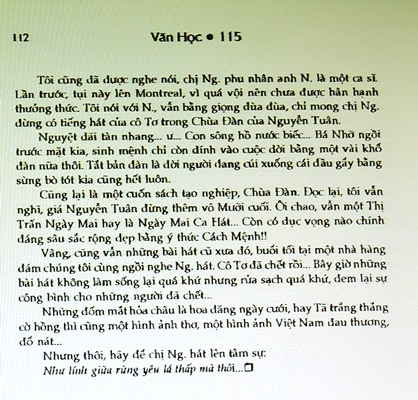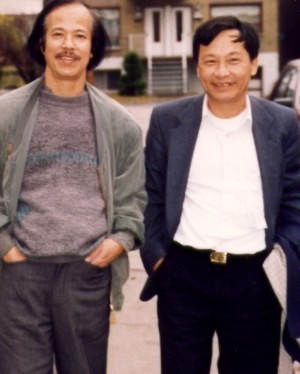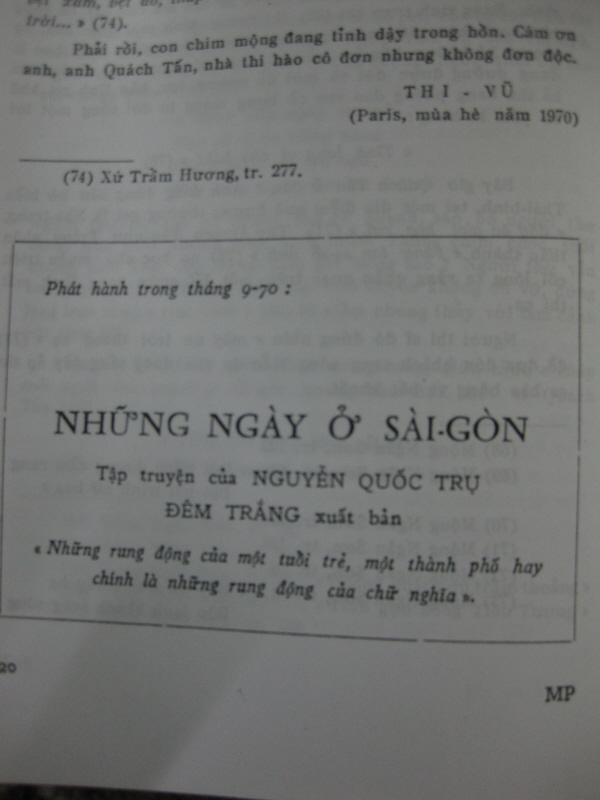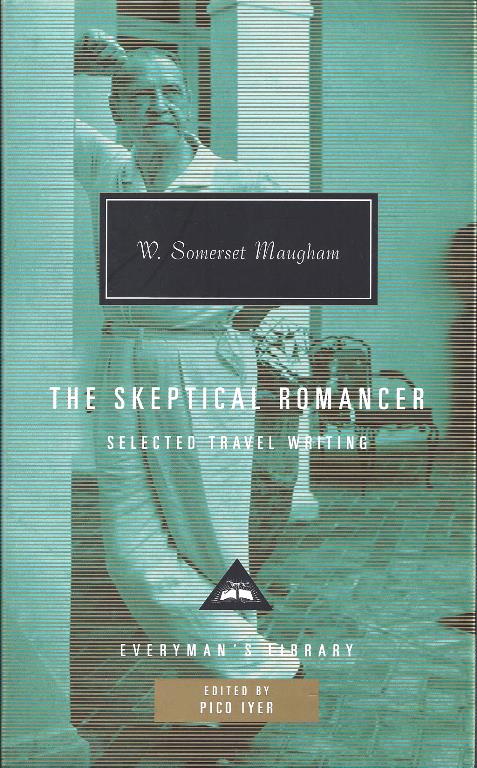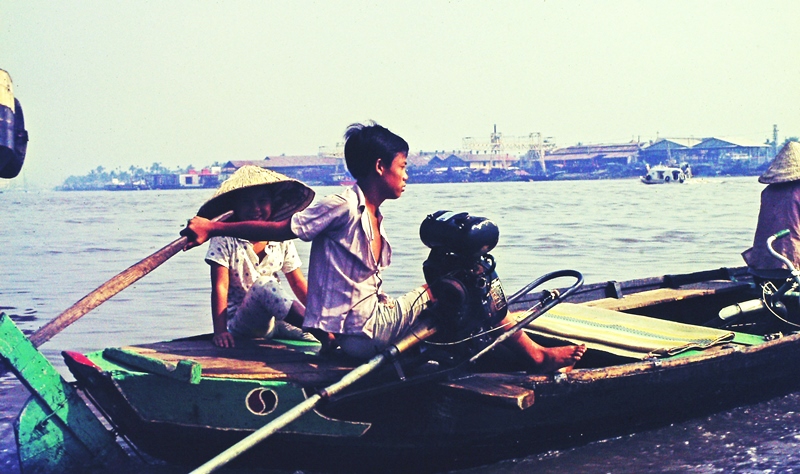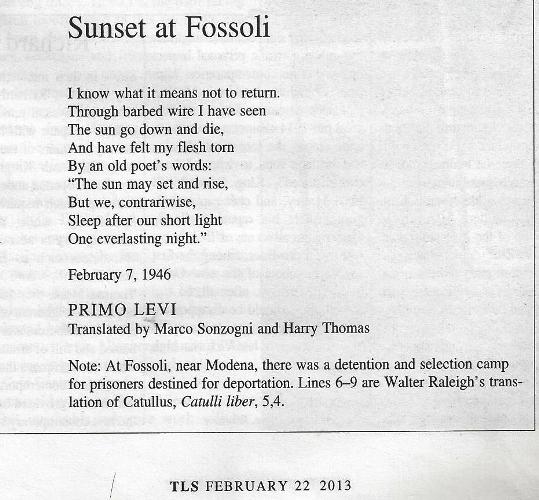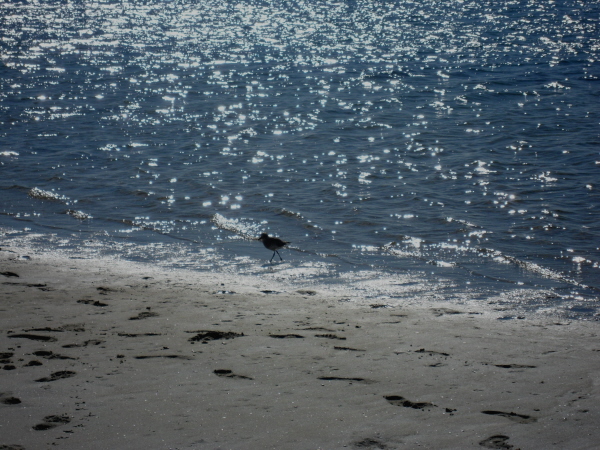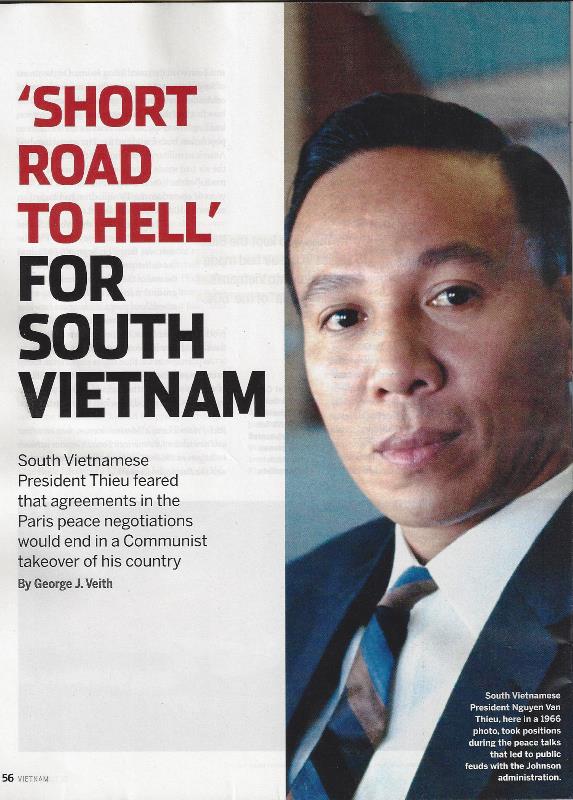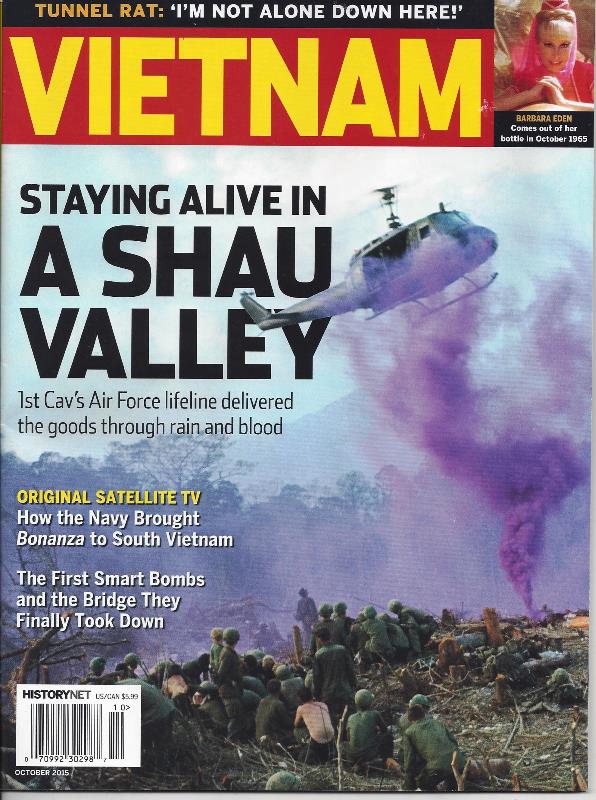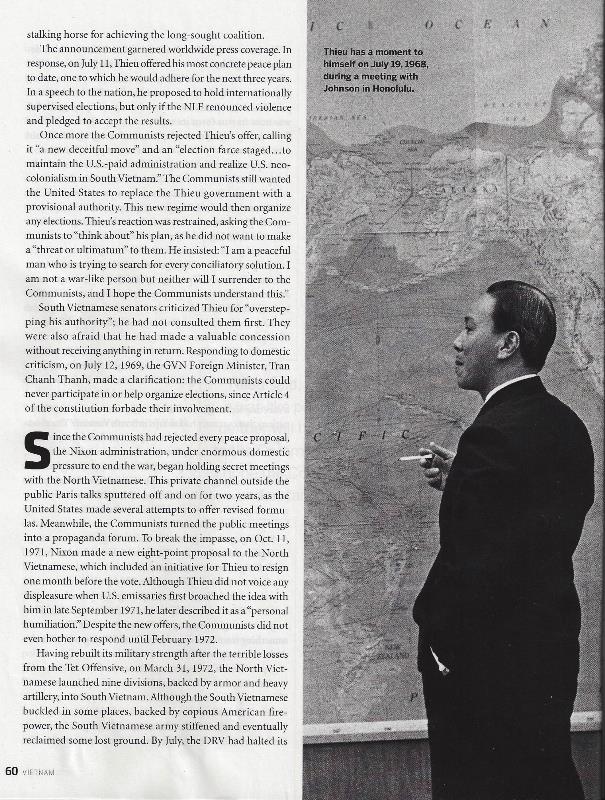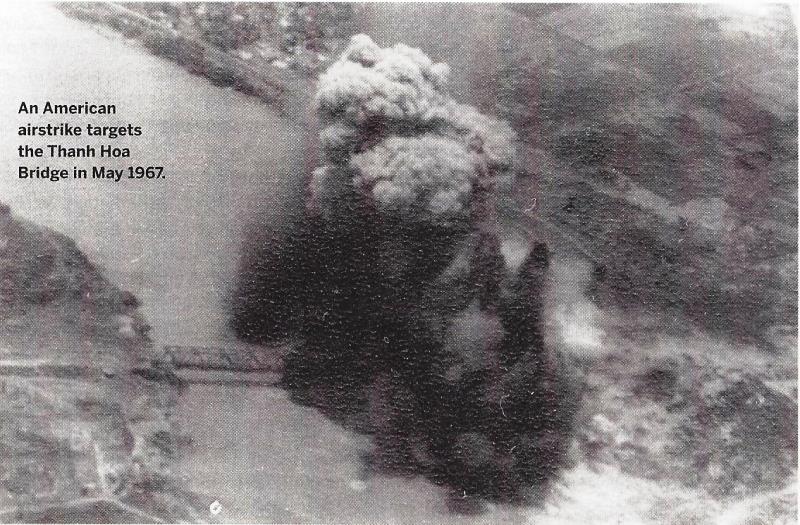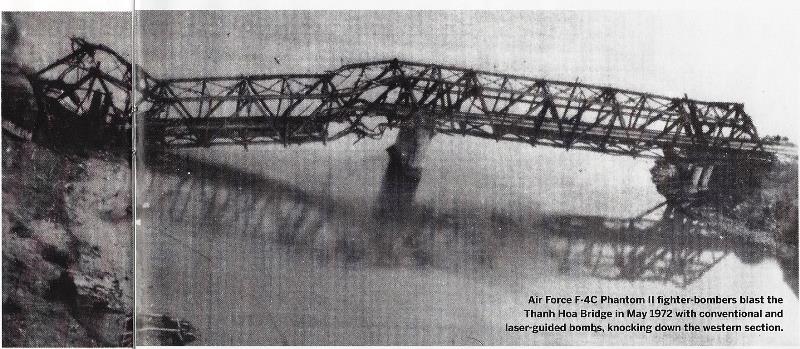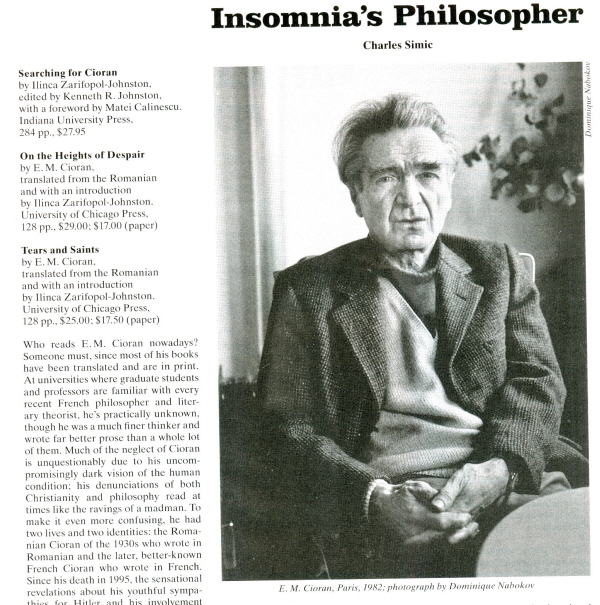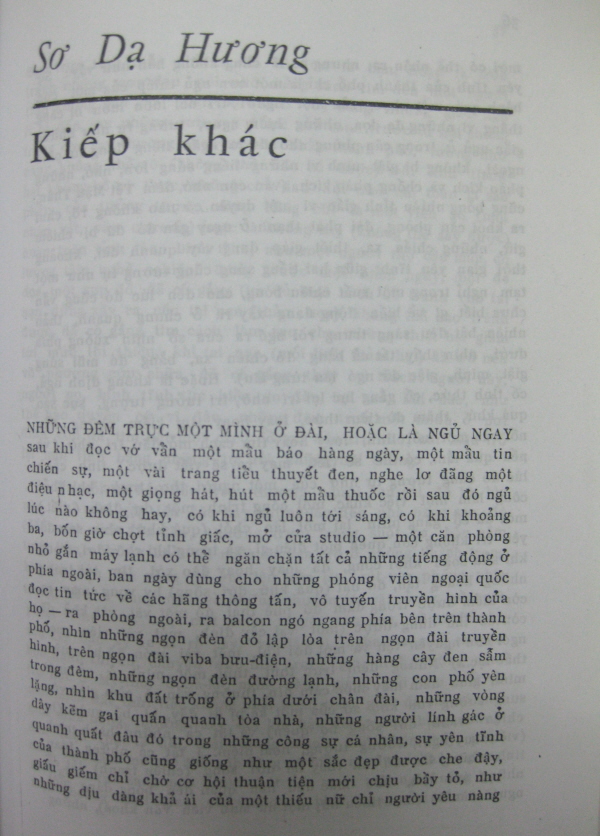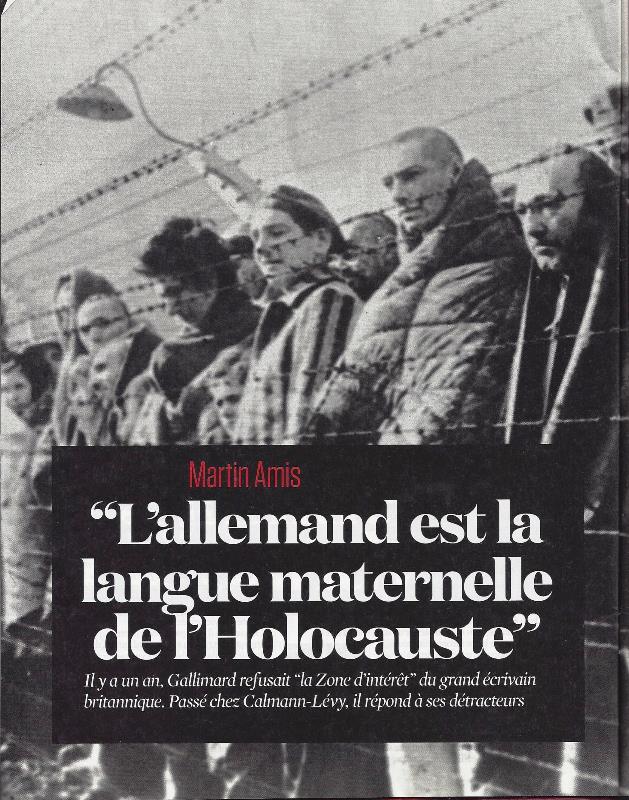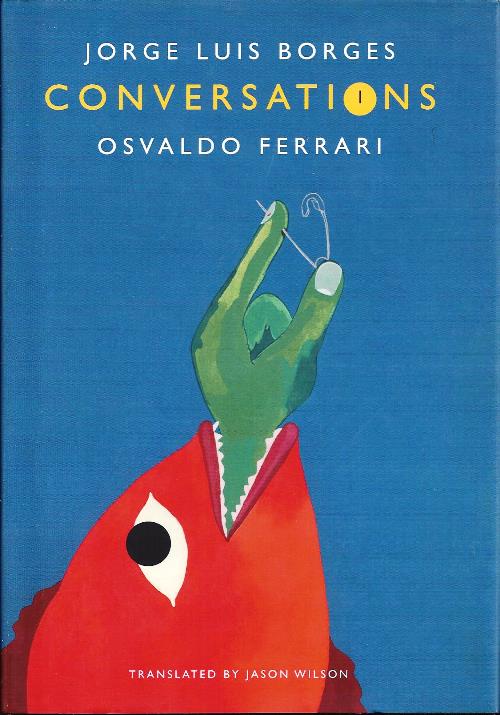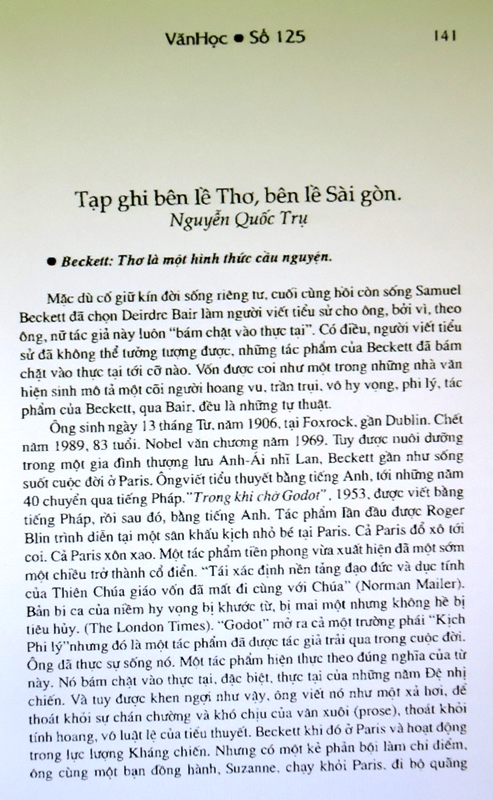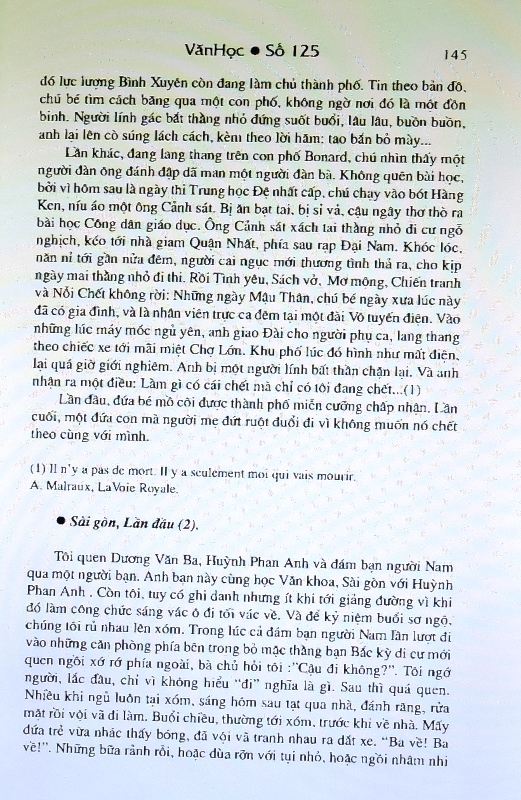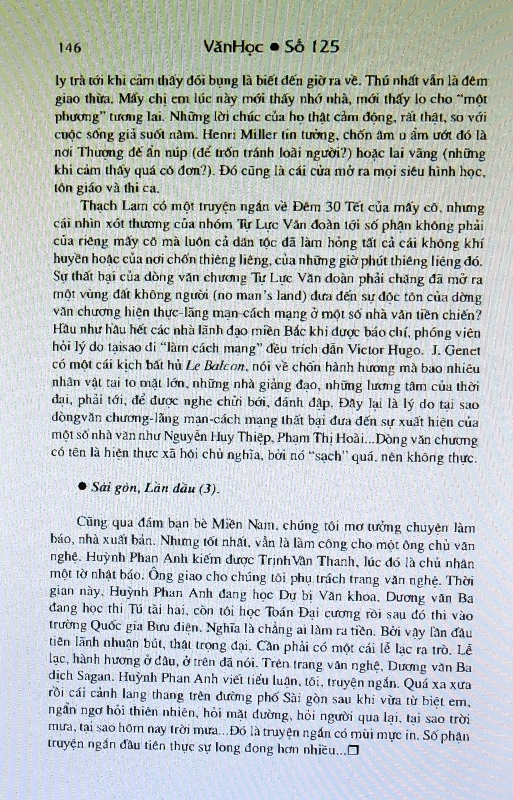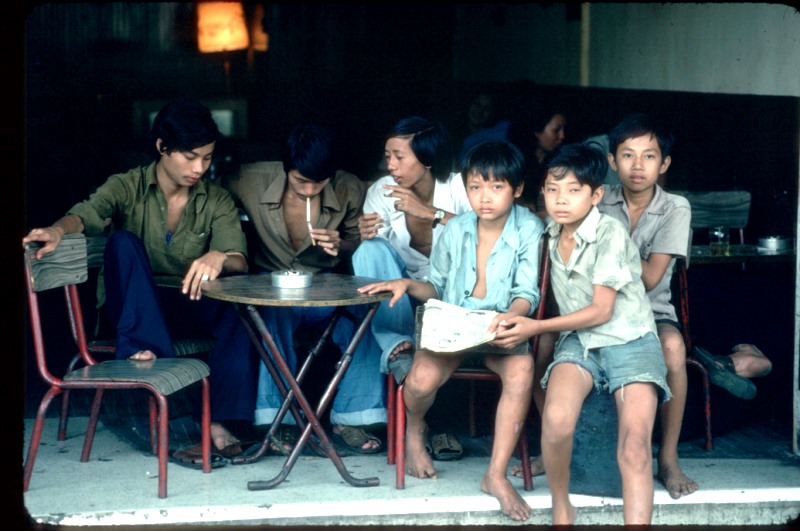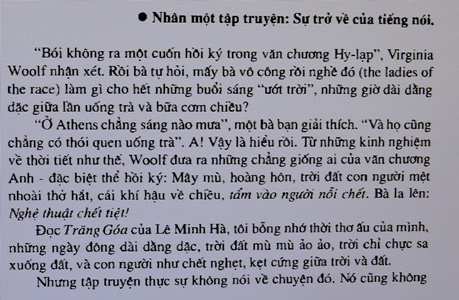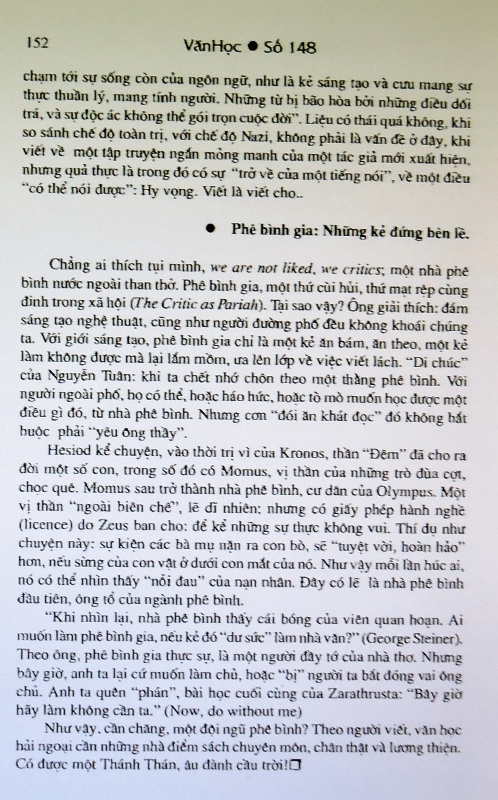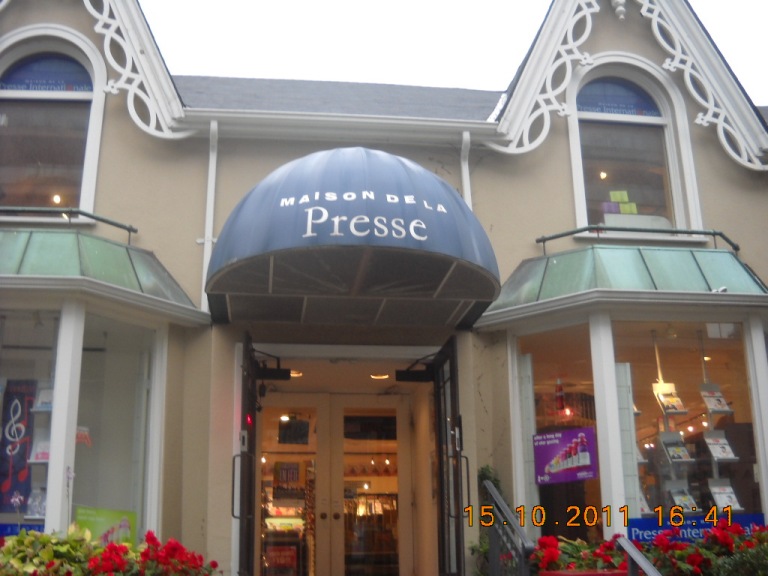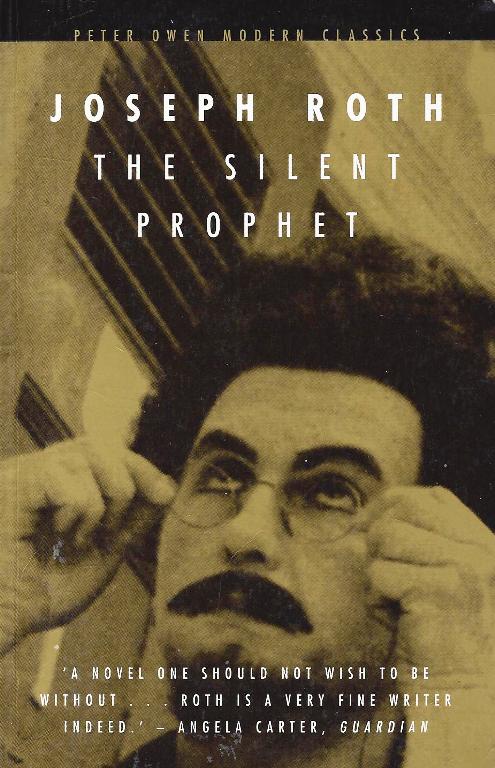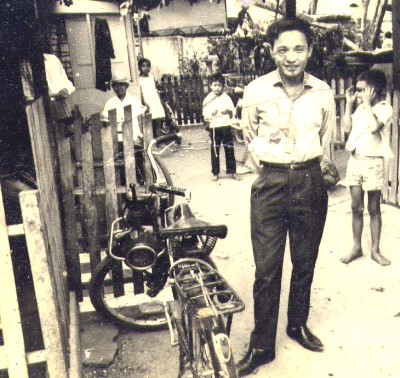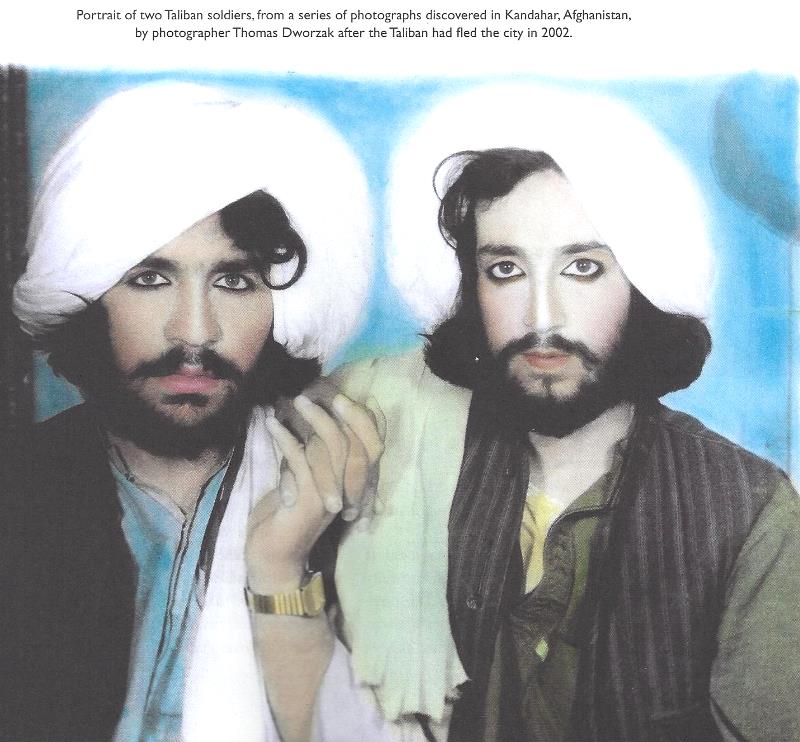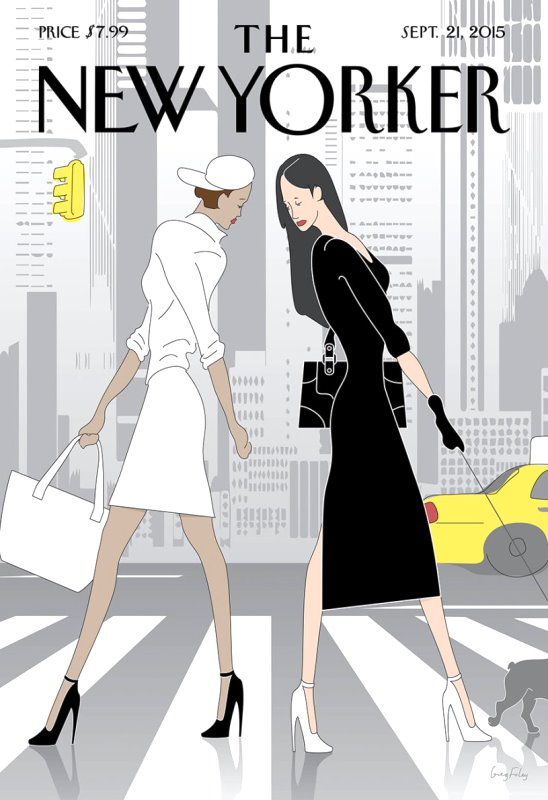|

|
Viết Mỗi Ngày
Mà không phải chỉ có Dương Thu Hương. Lớn hơn Dương Thu Hương rất nhiều,
nhà văn Alexander Solzhenitsyn, giải Nobel văn chương năm 1970, bị trục
xuất khỏi Nga vào năm 1974; và sau một thời gian ngắn sống ở Tây Đức và
Thụy Sĩ, ông được mời sang Mỹ. Ông định cư ở Mỹ cho đến năm 1994, khi
chế độ cộng sản đã sụp đổ tại Nga, ông mới về nước. Trong gần 20 năm ở
Mỹ, Solzhenitsyn chỉ sống một cách lặng lẽ ở một địa phương khuất lánh
heo hút. Trừ sự ồn ã ở vài năm đầu, sau đó, dường như người ta quên mất
ông, hơn nữa, có khi còn bực bội vì ông. Một số quan điểm của ông, lúc
còn nằm trong nhà tù Xô Viết, được xem là dũng cảm; lúc đã sống ở Mỹ,
ngược lại, lại bị xem là cực đoan.
NHQ
Solz qua Tây Phương sau bài diễn văn để đời ở Harvard, [chửi
Mẽo như điên], ông lui về pháo đài của ông,
ở Vermont cả gia đình xúm nhau làm nhà xb, viết
như điên, in như điên. Không thèm vô quốc
tịch Mẽo, phán, ngay từ lúc mới ra hải ngoại, tao sẽ về, và
lúc đó chế độ Đỏ đã sụp rồi [nhân tiện, bài
viết mới nhất của Bùi Văn Phú là hàm ý
này, lưu vong sẽ có ngày trở về, và Vẹm lúc
đó đã chết].
Đúng là điếc không sợ súng.
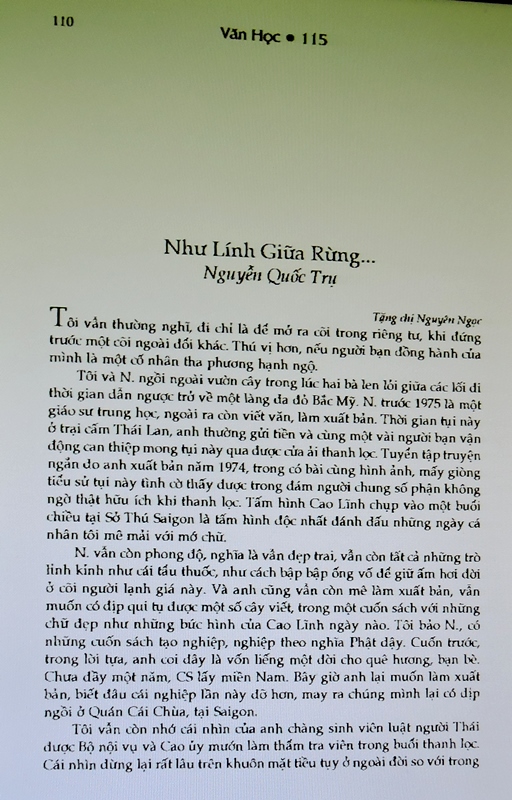
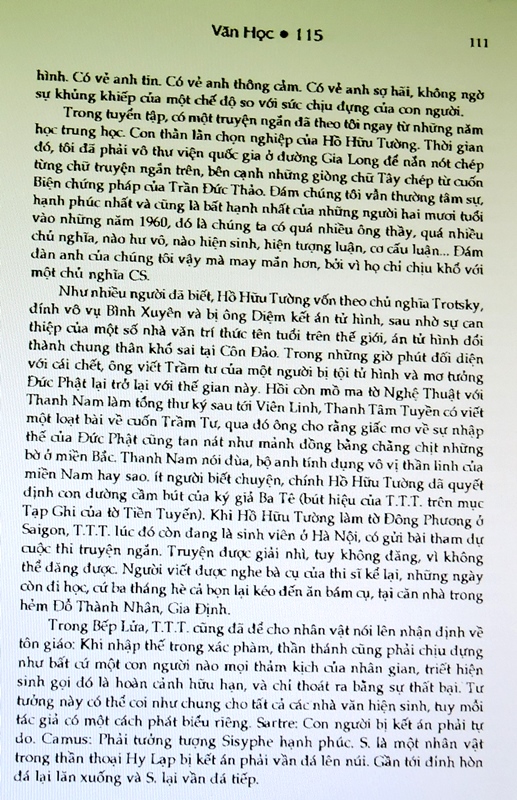
1 YEAR AGO TODAY Sat, Oct 4, 2014 Chữ người tử tù
Nhà văn Isaac Bashevis Singer, khi phải lựa chọn một số truyện ngắn,
để làm một tuyển tập, ông nói đùa, mình đúng là một đấng "quân vương",
với ba ngàn cung tần mỹ nữ, và hàng lô con cháu. Chẳng muốn bỏ đứa nào!
Ông sinh năm 1904, tại Ba Lan, di cư sang Mỹ năm 1935, và một thời
gian làm ký giả cho tờ báo cộng đồng Jewish Daily Forward, tại New York
City. Chỉ viết văn bằng tiếng Iddish, và được coi như nhà văn cuối cùng,
và có lẽ vĩ đại nhất của "trường" văn...
Continue Reading
Follow
 1 hr · Edited ·
Mấy
hôm anh Tường cứ đòi ra Huế chơi, cái Líp con
gái anh bận lắm nhưng vẫn cố sắp xếp đưa ba mạ ra Huế. Ra Huế được
ba ngày, thăm bạn bè đầy đủ xong đột nhiên anh đổ bệnh
thập tử nhất sinh. Sự sống tính từng giờ. Cái Líp khóc
quá, nó làm bài thơ:" Xin ba vài năm nữa"
rất cảm động, anh Tô Nhuận Vĩ nói ai đọc bài thơ cũng
ứa nước mắt. Có lẽ anh Tường cảm động quá nên làm
theo ý con. Từ sáng nay anh đã khá lên
phần nào, tuy vẫn nằm thở ô xy.
P/S: Anh Tường đang ốm đau,
kẻ nào chĩa mồm vào đây biêu riếu anh ấy sẽ bị
coi là quân mất dạy và sẽ bị chặn ngay lập tức.
*****
Sợ lâu lắm mới đi được.
Cầu được như Võ Tướng Quân!
GCC
Tribute to Võ Phiến
Võ Phiến, nhà văn Bình Định
Trường hợp Võ Phiến
Note: Ông con đấu tố ông bố.
Khi
viết những dòng này mình vẫn không tin nhà
văn Nhật Tuấn đã rũ bỏ "Nơi Hoang Dã" đi về cõi khác!
Nhớ lần về Việt Nam nhà văn Nhật Tuấn chỉ đường cho mình tới nhà anh ở
Bình Dương. Đang lớ ngớ hỏi đường thấy anh ấy đi xe máy ra trên xe treo
lủng lẳng 4 con gà chết. Anh nói: chó nhà mình nó cắn mấy con này. Em
có biết làm thịt gà không? Mình trả lời em biết, nhưng em và bạn em thêm
anh nữa làm sao ăn hết cả 4 con.
- Để mình đưa cho ông hàng xóm 2 con nhờ ông ấy vặt lông. Ba
người 2 con, lại còn nhiều đồ mồi tớ mua rồi, ăn không hết đâu. À mà
sao Tuấn sống ở nước ngoài bao nhiêu năm rồi mà gầy thế? Thế thì anh
phải hỏi "nước ngoài", em cũng chịu, mình trả lời.
Thấy anh sống một mình nhà đất thì rộng mình nói: ở một mình thế này,
nhớ có chuyện gì thì sao, khi trái gió trở trời? Anh Nhật Tuấn nói:
không sao đâu, tớ quen rồi. Tối hôm trước mình uống nhiều nên
nhức đầu. Anh Nhật Tuấn bảo: cậu vào phòng tớ mà nghỉ, tớ ngồi tiếp bạn
cậu, rồi nấu nướng sau. Vào phòng mình cũng không ngủ được cứ nhớ về
tiểu thuyết "Đi Về Nơi Hoang Dã" của anh Nhật Tuấn mà người gửi cho mình
là anh ruột anh ấy, nhà văn Nhật Tiến (hiện định cư tại California -
Mỹ.)
Xuống bếp, mình làm 2 món gà xé phay
và om sả ớt, xào mực, nấu canh chua cá lóc...
Uống bia xanh cổ rụt Sài Gòn là chính, ăn chỉ là...gia vị. Bao nhiêu
là chuyện để nói. Trong câu chuyện có nhắc tới nhân vật Beo Hồng... mình
nói: thôi anh, nhắc làm gì, chua cả miệng. Anh em mình có bao nhiêu
chuyện để nói...
Cách đây chưa lâu, anh còn nhắn vào FB
của mình: có thời gian về nhậu với tớ đi...
Thế mà!
Lúc này đây mình cứ day dứt, băn khoăn câu hỏi: anh sống một mình,
trước lúc anh rời bỏ "Miền Hoang Dã" có ai bên cạnh anh không?
Tạm biệt anh.
(Praha - 6 -10 - 2015) (Ảnh mình chụp với nhà văn Nhật Tuấn tại nhà anh ở Bình Dương cuối năm 2013.). Một số tác phẩm của nhà văn Nhật Tuấn: Trang 17 (1978)
Con chim biết chọn hạt (1981)
Bận rộn (1985)
Mô hình và thực tế (1986)
Lửa lạnh (1987)
Biển bờ (1987)
Tín hiệu của con người (1987)
Đi về nơi hoang dã (1988)
Niềm vui trần thế (1989)
Những mảnh tình đã vỡ (1990)
Tặng phẩm cho em (1995)
Một cái chết thong thả (1995)
RIP
Sếp 1 thời của Gấu Cà Chớn. Gấu đã kể ra rồi, thời gian nhà
xb Văn Học tính tái bản cuốn Mặt Trời Vẫn Mọc, dịch Hemingway.
Anh được Hoàng Lại Giang ra lệnh cùng làm việc với Gấu.
Thời Sự
Nobel Vật Lý
Kajita and McDonald win Nobel physics prize for work on neutrinos
Takaaki Kajita and Arthur McDonald win for discovery of neutrino oscillations, which show that neutrinos have mass
Nobel vật lý về tay hai tác giả khám phá ra những
rung động của neutrios, và điều này chứng tỏ, chúng
có khối lượng!
Ui chao, đúng là THNM, vì bèn nhớ ra câu
tự xoa đầu thần sầu, cái gì gì selfie, Những ngày
ở Xề Gòn.
Note: neutrino, là neutron, tiếng Tẩy, không
phải hạt cơ bản, mà là trung hòa tử, như Gấu còn
nhớ được, nó không có khối lượng. Cái sự kiện
có khối lượng này sẽ gây chấn động trong giới giang hồ
vật lý học.
Một đấng Canada, một đấng Nhật Bổn chia nhau giải Nobel vật lý
Nobel Y học
DESPITE
what the romantic poets would have you believe, the natural world is not
a friendly place. It is full of dangerous creatures, and some of the most
dangerous are the smallest: the bacteria, viruses and parasites that between
them debilitate and kill millions of people every year. But it is possible,
with a bit of cunning, a bit of luck and a lot of hard work, to turn a bit
of nature against itself—to humanity's benefit. And it is for exactly this
sort of work that Sweden's Royal Academy of Sciences has awarded the 2015
Nobel prize in physiology or medicine.
Độc giả Kim Dung hẳn là nhớ câu phán trứ
danh của ông, nơi nào phát sinh độc, thì quanh
quẩn đó, có thứ trị độc.
Giải Nobel Y học năm nay, bảnh hơn, phán, thuốc trị độc, là từ thuốc độc mà ra!
Mặc dù những nhà thơ lãng mạn khiến bạn
tin rằng, thiên nhiên vốn hiền hoà.
Đếch phải như thế.
Nó là nơi đầy những sinh vật nguy hiểm, và một vài
thứ nguy hiểm nhất, thì nhỏ nhất…
Nhưng có thể, với tí
cà chớn, tiếu lâm, láu cá, tí cơ may, và
lao động tới chỉ, con người làm cho thiên nhiên vs thiên
nhiên, để thủ lợi.
Nobel 2015, về diện mạo học hay là y học, được ban cho những con người làm cái thứ việc kể trên.
Cô Rơm và những truyện ngắn khác
Cô Rơm là người Hà-nội. Theo như tôi
biết, hay tưởng tượng rằng mình biết, cô có tên
mộc mạc này, là do bà mẹ sinh ra cô trên
một ổ rơm, khi gia đình chạy khỏi thành phố Hà-nội,
những ngày đầu "Mùa Thu".
Kim Dung cho rằng thiên nhiên khi "bịa đặt" ra một tai ương,
thường cũng bịa đặt ra một phương thuốc chữa trị nó, quanh quẩn đâu
gần bên thảm họa.
Ông kể về một thứ cỏ chỉ có ở một địa phương lạnh khủng khiếp,
và người dân nghèo đã dùng làm giầy
dép.
Những người dân quê miền Bắc chắc không thể quên
những ngày đông khắc nghiệt, và để chống lại nó,
có ổ rơm. Tôi nghĩ Trần Mộng Tú tin rằng "rơm" là
phương thuốc hữu hiệu, không chỉ để chống lại cái lạnh của thiên
nhiên, mà còn của con người.
Ít nhất, chúng ta biết được một điều: tác
giả đã mang nó tới miền Nam, rồi ra hải ngoại, tạo thành
thứ tiếng nói hiền hậu chuyên chở những câu chuyện thần
tiên.
"Ba mươi năm ở Mỹ làm được dăm bài thơ, viết được vài
truyện ngắn. Lập gia đình vốn liếng được ba đứa con (2 trai, 1 gái:
các cháu 22, 20, 19), một căn nhà để ở.... lúc
nào tôi cũng nghĩ tôi là người giầu có lắm....
trong túi luôn có một bài thơ đang làm
dở. Thấy Trời rộng lượng với mình quá. Mấy chục năm trước Trời
có lấy đi nhà cửa người thân. Bây giờ Trời lại
đền bù. Còn quê hương thì lúc nào
cũng thấy ở trong tim, chắc khó mà mất được...".
Nguyễn Quốc Trụ
Cô Rơm và những truyện ngắn khác, nhà xb Văn Nghệ (Cali) 1999.
Nghĩ lại về những bài học quá khứ của Âu Châu
Guardian Weekly, 2 & 8 Oct 2015, đọc Black Earth, Đất Đen: Lò Thiêu như là Lịch sử và như là Cảnh báo, của Snyder
TV sẽ đi bài này. Tác giả bài viết phê
bình cách nhìn của sử gia Snyder, xuất phát từ
những nỗi sợ sinh thái.
Tying the Holocaust to modern-day ecological fears is a flawed premise, says Richard J Evans
Black Earth: The Holocaust as History and Warning by Timothy Snyder
Bodley Head, 480pp
We have got the Holocaust all wrong, says Timothy Snyder, and so we have
failed to learn the lessons we should have drawn from it. When people talk
of learning from the Nazi genocide of some 6 million European Jews during
the second world war, they normally mean that we should mobilize to stop
similar genocides happening in future. But Snyder means something quite different,
and in order to layout his case, he provides an engrossing and often thought-
provoking analysis of Hitler's antisemitic ideology and an intelligently
argued country-by-country survey of its implementation between 1939 and 1945.
Hitler, Snyder correctly observes, was a believer in race
as the fundamental feature of life on Earth. History was a perpetual struggle
for the survival of the fittest race, in which religion, morality and secular
ethics all stood in the way of the drive for supremacy. His political beliefs
reduced humankind to a state of nature, sweeping aside the claims of modern
science to improve the natural world. Interfering in nature, for example
by improving crop yields in order to overcome the food supply deficit in
Germany during the first world war, was wrong: the way to achieve this aim
was to conquer the vast arable lands of eastern Europe.
Race, in Hitler's thought, replaced the state as the most
important characteristic of human society. What he wanted was anarchy, a
virtually stateless society, denuded of rules, laws and ethics, that allowed
the Nazis to do what they had to in the interests of the "Aryan" (ie German)
race. He had already begun to achieve this in Germany itself, where the expanding
world of the stormtroopers, the SS, the camps, the special courts and the
Nazi party was rolling back the frontiers of the established German state
and its institutions well before the war started. But it was only with the
conquest of eastern Europe that Hitler had the opportunity to create a truly
anarchic society in which expropriation, murder and extermination of those
he considered racially inferior - Poles, Ukrainians, Belarusians and other
"Slavs" - could be practiced without restraint.
For Hitler, as Snyder notes, Jews fell into a different
category. They were not a regional nor even a European enemy, but a universal,
global one. Rather than being an inferior race they were a "non -race" or
a "counter-race", not following the laws of nature, as Slavs, Teutons, Latins
and the rest of them did. Hitler's global vision potentially targeted Jews
wherever they could be found.
If the killing fields of eastern Europe could be the site
of mass extermination by virtue of the aboli- tion of the state - the Polish
state, the Soviet state (in the areas conquered by the Nazis), the Estonian,
Latvian and Lithuanian states - then the impact of Nazi exterminism in other
countries depended largely on how far the state and its institutions had
managed to survive. Thus most Jews escaped being murdered in Belgium and
Denmark, where the institutions of the state, headed by the monarchy, remained
largely in place, while in the Nether- lands, where the monarch and the leading
politicians had fled, they did not. Similarly, despite the antisemitism of
the Vichy regime, most French Jews managed to survive the war.
Snyder delivers what is surely the best and most unsparing
analysis of eastern European collaborationism now available, though the preceding
sections on the history of Polish and Russian antisemitism are perhaps longer
and more detailed than was necessary. Overlong, too, are the chapters on
partisan resistance. And although it is better by some distance than Snyder's
previous, overpraised book Bloodlands, Black Earth shares some of the same
failings as that flawed work, delivering an account of the Holocaust that
is skewed far too much towards eastern Europe; it also misunderstands the
ideological roots of the genocide, which, as most historians would now agree,
was set in motion not as an act of revenge against an imagined Jewish world
conspiracy following the failure of Operation Barbarossa in December 1941,
but as an act of hubris launched the previous July, as Hitler and the leading
Nazis considered the operation a resounding success.
This is not a comprehensive history of the Nazi genocide
of the Jews, therefore, but a book with a thesis: and it is here that it
really goes off the rails. In his concluding chapter, Snyder describes the
Holocaust as an act of "ecological panic", the belief of Hitler that the
Jews were "an ecological flaw": nature's harmony could only be restored through
their complete elimination.
In the 21 first century, he speculates, climate change
could lead to wholesale food shortages caused by desertification of huge
areas of the planet, or alternatively drastic economic collapse. The consequences
of the destruction of the state, so obvious in Eastern Europe between the
wars, can now be seen in Iraq and Syria. Territorial conquest and exterminatory
wars might occur with increasing frequency as the condition of the Earth
deteriorates. China might invade Africa. Russia has already invaded Ukraine.
Some Muslims are starting to blame Jews and gays. American evangelical Christians
decry the work of scientists. Climate change, they say, is a myth, de- signed
to give the state greater powers. But this is -just what Hitler said about
the state. Far better, Snyder concludes, to use governments to slow down
and eliminate climate change, reduce its harmful effects and ensure everyone
has enough to eat.
Such proposals seem reasonable enough, but do they really
constitute lessons we should all learn from the Holocaust? Snyder here is
surely confusing Hitler's global crusade against the Jewish "world-enemy"
with his regional agenda of ensuring Germany's food supplies, which the science
of the 1930s was not capable of guaranteeing on the basis of German agricultural
production alone. His speculations about possible Chinese or Russian wars
of conquest driven by the need for resources are wild in the extreme. This
is a pity: much of this book makes for compelling and convincing reading,
but tying historical arguments to ecological nostrums in this way does not
really work.
Bắt Trẻ Đồng Xanh
http://www.diendantheky.net/2010/12/bat-tre-ong-xanh1.html
Note: Bài viết này,
lần đầu đăng trên nhật báo Tiền Tuyến, tờ báo của quân
đội VNCH. Chi tiết này rất quan trọng, đến nỗi Phan Lạc Phúc,
chủ bút, phải đi 1 đường cám ơn.
Có thể nói, khi cho đăng, chọn báo đăng, là VP
đã chấp nhận thái độ chính trị, tôi là
nhà văn chống cộng.
Trong số báo Văn, đặc biệt về VP, có chi tiết này.
Cái dã tâm ăn cướp cho bằng được Miền Nam, có,
từ khi còn ở trong bụng mẹ của từng tên Bắc Kít.
Đẻ ra 1 phát, là ngửi ngay liền cái đói, là bèn nghĩ đến ăn cướp!
Đây là cách giải thích mới nhất về Nazi, của sử gia Snyder, mà TV đang giới thiệu.
Áp dụng vào xứ Mít, quá đúng.
Nhưng cái vụ bắt trẻ này, không đúng.
Đám VC Nam Bộ tự động dâng con nít cho Bắc Kít,
khi bắt con cái của chúng vượt Trường Sơn.
Thế mới dã man.
Cũng như khi được lệnh tập kết, thì tên Nam Bộ nào cũng
còn được lệnh, phải làm cho 1 cô gái Nam Kít
mang bầu, trước khi đi.
“Nature,” he wrote, “knows no political boundaries.”
Thiên nhiên, Hítler phán, đếch biết đến cái
gọi là biên cương chính trị.
Mít vs Lò Thiêu Người
Sách Báo
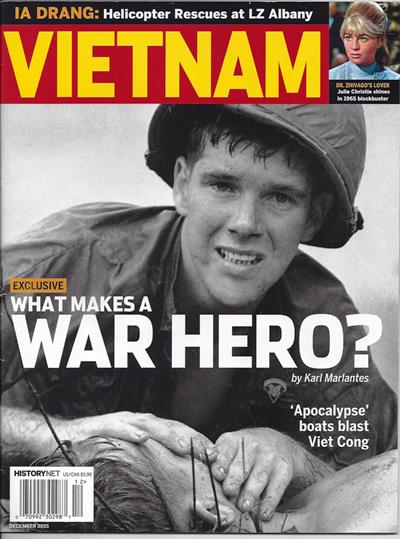

Vietnam, 1965. Noel @ Đức Lập with GI, and “Vĩnh Biệt Tình Em, Dr. Zhivago”, with Julie Christie.
Vẹm chửi Tẩy mũi lõ, chia để trị, khi phân ra Nam Kỳ tự trị, Bắc Kỳ bảo hộ.
Không phải.
Có cái gì đó, khiến Tẩy rất dễ gần với Nam Kít.
Maugham, trong bài viết vế Huế cũng nhận ra.
Chính cái
điều này, càng khiến Bắc Kít, không phải thù
Tẩy mũi lõ, mà thằng em ruột Nam Bộ của nó.
Chán thế!
Cuốn sách những sinh vật tưởng tượng
Viết mỗi ngày
Borges
Conversations
In Memory of Borges
Cô bạn, cô phù dâu ngày nào, Gấu gặp
lại ở hải ngoại. Cô phán, cực kỳ bi thương, cực kỳ hạnh phúc,
tại làm sao mà bao nhiêu năm trời, tình cảm của
anh dành cho tôi vẫn như ngày nào.
Nhờ gặp lại cô, Gấu viết lại được, không chỉ thế, mà còn làm được tí thơ!
Bài viết về cô, Cầm Dương Xanh, được một vị nữ độc giả, Bắc
Kít, Hà Lội, mê quá, bệ ngay về trang FB của cô.
Cô tình cờ thấy trang TV, trong khi lướt net, tìm tài liệu về Camus.
Book of Fantasy

SAIGON 1970 by Charley Seavey - Walking towards the market - Chợ chim chó,
thú, đường Hàm Nghi (đoạn giữa Pasteur và
Công Lý)
Hình manhhai
A Critic at Large October 5, 2015 Issue
The Unforgotten
Patrick Modiano’s mysteries.
By Alexandra Schwartz
http://www.newyorker.com/magazine/2015/10/05/the-unforgotten-books-alexandra-schwartz
Levi Page
PRIMO LEVI
Unfinished Business
Sir, please accept my resignation
As of next month,
And, if it seems right, plan on replacing me.
I'm leaving much unfinished work,
Whether out of laziness or actual problems.
I was supposed to tell someone something,
But I no longer know what and to whom: I've forgotten.
I was also supposed to donate something-
A wise word, a gift, a kiss;
I put it offfrom one day to the next. I'm sorry.
I'll do it in the short time that remains.
I'm afraid I've neglected important clients.
I was meant to visit
Distant cities, islands, desert lands;
You'll have to cut them from the program
Or entrust them to my successor.
I was supposed to plant trees and I didn't;
To build myself a house,
Maybe not beautiful, but based on plans.
Mainly, I had in mind
A marvelous book, kind sir,
Which would have revealed many secrets,
Alleviated pains and fears,
Eased doubts, given many
The gift of tears and laughter.
You'll find its outline in my drawer,
Down below, with the unfinished business;
I didn't have the time to write it out, which is a shame,
It would have been a fundamental work.
Translated from the Italian by Jonathan Galassi
PRIMO LEVI* (I9I9-I987) was an Italian chemist and writer, best known for
his memoirs if This Is a Man and The Periodic Table. The poem in this issue
is from Collected Poems, translated by Jonathan
Galassi, from The Complete Works of Primo Levi, edited by Ann Goldstein.
Copyright © I997 by Giulio Einaudi editore s.p.a., Torino.
English translation copyright © 20IS by Jonathan Galassi.
Poetry Magazine Oct 2015
Mặt Trời Lặn
ở Fossoli
Tôi biết, nghĩa là gì,
không trở về.
Qua những
hàng rào kẽm gai
tôi nhìn
thấy
mặt trời xuống và chết
Và da
thịt tôi như bị xé ra
Bởi những
dòng thơ của một thi sĩ già:
“Mặt trời
thì có thể lặn và mọc
Nhưng
chúng tôi, ngược hẳn lại
Ngủ, sau
1 tí ánh sáng ngắn ngủi,
Một đêm
dài ơi là dài”
Tháng Hai,
7, 1946
Primo Levi
Mít vs Lò Thiêu Người
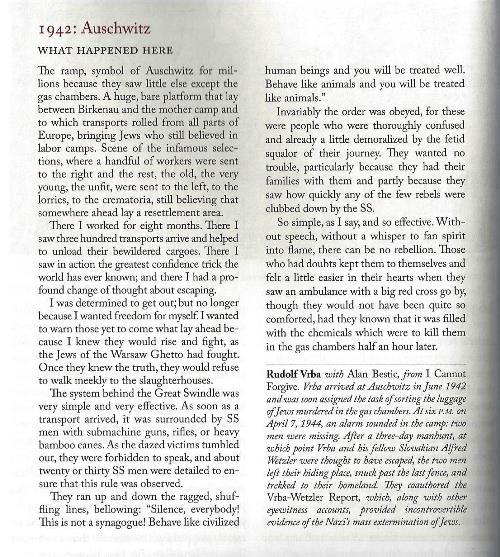
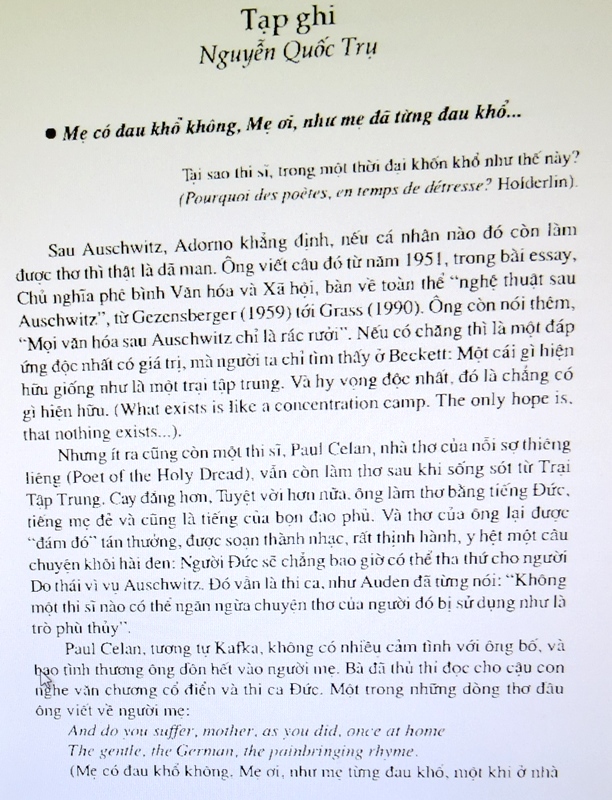
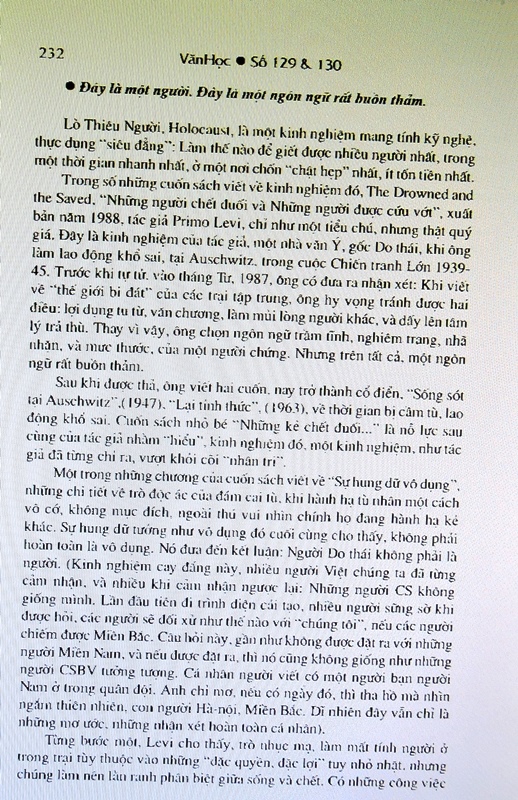
Tạp Ghi Văn Học, Xuân Đinh Sửu, 1 & 2 1977.
Ngụy có bao giờ nghĩ đến chuyện cải tạo Bắc Kít, nếu thắng trận.
Một trong những
chương của cuốn sách viết về "Sự hung dữ vô dụng". Những chi
tiết về những trò độc ác của đám cai tù, khi
hành hạ tù nhân một cách vô cớ, không
một mục đích, ngoài thú vui nhìn chính
họ đang hành hạ kẻ khác. Sự hung dữ tưởng như vô dụng
đó, cuối cùng cho thấy, không phải hoàn toàn
vô dụng. Nó đưa đến kết luận: Người Do thái không
phải là người. (Kinh nghiệm cay đắng này, nhiều người Việt
chúng ta đã từng cảm nhận, và thường là cảm nhận
ngược lại: Những người CS không giống mình. Ngày đầu
tiên đi trình diện cải tạo, nhiều người sững sờ khi được hỏi,
các người sẽ đối xử như thế nào với "chúng tôi",
nếu các người chiếm được Miền Bắc. Câu hỏi này gần như
không được đặt ra với những người Miền Nam, và nếu được đặt
ra, nó cũng không giống như những người CSBV tưởng tượng. Cá
nhân người viết có một anh bạn người Nam
ở trong quân đội. Anh chỉ mơ, nếu có ngày đó,
thì tha hồ mà nhìn ngắm thiên nhiên, con
người Hà-nội, Miền Bắc. Lẽ dĩ nhiên, đây vẫn chỉ là
những mơ ước, nhận xét hoàn toàn có tính
cách cá nhân.
Cuốn sách những sinh vật tưởng tượng
Viết mỗi ngày
Borges
Conversations
In Memory of Borges
Cô bạn, cô phù dâu ngày nào, Gấu gặp
lại ở hải ngoại. Cô phán, cực kỳ bi thương, cực kỳ hạnh phúc,
tại làm sao mà bao nhiêu năm trời, tình cảm của
anh dành cho tôi vẫn như ngày nào.
Nhờ gặp lại cô, Gấu viết lại được, không chỉ thế, mà còn làm được tí thơ!
Bài viết về cô, Cầm Dương Xanh, được một vị nữ độc giả, Bắc
Kít, Hà Lội, mê quá, bệ ngay về trang FB của cô.
Cô tình cờ thấy trang TV, trong khi lướt net, tìm tài liệu về Camus.
Book of Fantasy
1 YEAR AGO TODAY Tue, Sep 30, 2014 SÁNG TẠO số 3 - tháng 12/ 1956 - "Những ngón tay bắt được của trời"
http://huyvespa.blogspot.com/…/sang-tao-so-3-thang-12-1956-…
"- Những tờ báo mà tôi đã chủ trương thì
nó là cái dàn phóng, cái plate-forme,
cái tribune commune, nói chung là như vậy, tụ họp mọi
người lại đấy để cho có một chỗ đất đứng rồi thì anh muốn
làm gì thì làm. Nó chỉ là một
chỗ départ, một chỗ để khởi hành. Bây giờ nếu tôi
khoẻ trở lại thì tôi cũng làm y như vậy. Làm
một chỗ để đứng. Tôi rất yêu cái tinh thần, tinh thần
thật ở Pháp. Camus. Bon. Sartre. Bon. Tôi chịu ảnh hưởng của
mấy người đó. ...Tôi cho là họ rất hay. Thành
ra tờ Sáng Tạo mới có những tiểu đề ở dưới gọi là Diễn
đàn văn học nghệ thuật hôm nay - aujourd'hui, chứ không
có hiện đại gì cả"
(MAI THẢO trả lời phỏng vấn THỤY KHÊ 1997)
1 YEAR AGO TODAY Mon, Sep 29, 2014 Biển Buổi chiều đứng trên bãi Wasaga
Nhìn hồ Georgian
Cứ nghĩ thềm bên kia là quê nhà. ... See More
Mít vs Lò Thiêu Người
The Gulag can be regarded as the quintessential expression of modern Russian
society. This vast array of punishment zones across Russia, started in Tsarist
times and ending in the Soviet era, left a legacy on the Russian quest for
identity. In Russia, prison is usually referred to as the malinkaya zone
(small zone). The Russians have an expression for freedom: bolshaya zona,
(big zone). The distinction being that one is slightly less humane than the
other. But which one? A Russian friend once said, "First they make you work
in the factory, then they finish you off in prison." By the 1950s, the Gulag
played an integral role in the development of the Soviet economy. In fact,
Stalin used these camps as a source of economic stimulation, to excavate
the vast natural resources of the east and to stimulate growth and settlement
across the twelve time zones of the former USSR. The majority of mines, timber
industries, factories, and Russia's prized oil and gas fields were all discovered
through convict labour. In effect, almost every imaginable industry in Russia
today exists because of Stalin's policy. This photo was taken at the state
theatre in Vorkuta, a large city in the far north of Russia, beyond the Arctic
Circle, and one of the largest penal colonies created by the Soviet bureaucracy.
Today, survivors-both prisoner and guard-and their descendants still live
in this city. The woman was the lead in a play by Ostrovsky: Crazy Money.
www.donaldweber.com
Spring 2015
THE NEW QUARTERLY
Nếu không có cú dậy cho VC một bài học,
lũ Ngụy "vẫn sống ở Trại Tù", cùng với con cái của chúng.
Tờ Điểm Sách Nữu Ước, NYRB, có bài của Timothy Snyder,
về “Thế giới của Hitler”.
Tờ Người Nữu Ước, Adam Gopnik có bài
“Những ám ảnh của Hitler”.
Tin Văn post cả hai, và thủng thẳng
đi vài đường về nó. Một câu chuyện mới về Lò
Thiêu, như Adam Gopnik, tác giả bài viết trên tờ
Người Nữu Ước, phán.
Gulag
có thể được coi như là 1 biểu hiện cốt tuỷ của xã hội
hiện đại Nga. Không gian tù kể như khắp nước Nga, thời gian,
khởi từ chế độ phong kiến và chấm dứt cùng với thời kỳ Xô Viết, để
lại gia tài là cuộc truy tìm căn cước Nga. Ở Nga,
nhà tù thường được gọi là “vùng nhỏ”. Và
họ có 1 chữ để gọi tự do, “vùng lớn”.
Cái nào
“người” hơn cái nào?
Trước tiên, họ cho anh làm
ở nhà máy, sau nhà máy, thì tới nhà
tù.
Trong bài điểm cuốn Mùa Gặt Buồn của Conquest, Tolstaya phán,
chế độ Xô Viết chẳng hề phịa ra 1 thứ trừng phạt mới nào.
Chúng có sẵn hết, từ hồi phong kiến. Cái gọi là
thời ăn thịt người cũng có sẵn, từ thời Ivan Bạo Chúa.
Tất cả những nhận xét trên đây, áp dụng y chang
vào xứ Bắc Kít. Suốt bốn ngàn năm văn hiến, Bắc Kít
chưa từng biết đến tự do, dân chủ… là cái gì.
Những hình phạt thời kỳ phong kiến, đầy rẫy. Bạn thử chỉ cho Gấu, trong
lịch sử Bắc Kít, một giai thoại nào, liên quan, mắc mớ,
"nói lên" lòng nhân từ của… Bắc Kít?
Tô Hoài, thay vì gọi “Đàng Ngoài”, thì chỉ đích danh, “Quê Người”.
Ông biết, có 1 nơi đúng là Quê Nhà,
nhưng cùng với cái biết đó, là dã tâm
ăn cướp.
Hết phong kiến, thì lại đô hộ Tầu, hoặc xen kẽ, rồi bảo hộ Pháp.
Thời ăn thịt người cũng có.
Ăn thịt lợn, vỗ béo bằng thai nhi, thì cũng là ăn thịt người, vậy.
During Stalin's time, as I see it, Russian society, brutalized by centuries
of violence, intoxicated by the feeling that everything was allowed, destroyed
everything "alien": "the enemy," "minorities"-any and everything the least
bit different from the "average." At first this was simple and exhilarating:
the aristocracy, foreigners, ladies in hats, gentlemen in ties, everyone
who wore eyeglasses, everyone who read books, everyone who spoke a literary
language and showed some signs of education; then it became more and more
difficult, the material for destruction began to run out, and society turned
inward and began to destroy itself. Without popular support Stalin and his
cannibals wouldn't have lasted for long. The executioner's genius expressed
itself in his ability to feel and direct the evil forces slumbering in the
people; he deftly manipulated the choice of courses, knew who should be the
hors d' oeuvres, who the main course, and who should be left for dessert;
he knew what honorific toasts to pronounce and what inebriating ideological
cocktails to offer (now's the time to serve subtle wines to this group; later
that one will get strong liquor).
It is this hellish cuisine that Robert Conquest examines. And the leading
character of this fundamental work, whether the author intends it or not,
is not just the butcher, but all the sheep that collaborated with him, slicing
and seasoning their own meat for a monstrous shish kebab.
Tatyana Tolstaya
Lần trở lại xứ Bắc, về lại làng cũ, hỏi bà
chị ruột về Cô Hồng Con, bà cho biết, con địa chỉ, bố mẹ bị
bắt, nhà phong tỏa, cấm không được quan hệ, và cũng chẳng
ai dám quan hệ. Bị thương hàn, đói, và khát,
và do nóng sốt quá, khát nước quá, cô
gái bò ra cái ao ở truớc nhà, tới bờ ao thì
gục xuống chết.
Có thể cảm thấy đứa em quá đau khổ, bà an ủi, hồi đó “phong trào”.
Tolstaya viết:
Trong thời Stalin, như tôi biết,
xã hội Nga, qua bao thế kỷ sống dưới cái tàn bạo, bèn
trở thành tàn bạo, bị cái độc, cái ác
ăn tới xương tới tuỷ, và bèn sướng điên lên, bởi
tình cảm, ý nghĩ, rằng, mọi chuyện đều được phép, và
bèn hủy diệt mọi thứ mà nó coi là “ngoại nhập”:
kẻ thù, nhóm, dân tộc thiểu số, mọi thứ có tí
ti khác biệt với nhân dân chúng ta, cái
thường ngày ở xứ Bắc Kít. Lúc đầu thì thấy đơn
giản, và có tí tếu, hài: lũ trưởng giả, người
ngoại quốc, những kẻ đeo cà vạt, đeo kiếng, đọc sách, có
vẻ có tí học vấn…. nhưng dần dần của khôn người khó,
kẻ thù cạn dần, thế là xã hội quay cái ác
vào chính nó, tự huỷ diệt chính nó. Nếu
không có sự trợ giúp phổ thông, đại trà
của nhân dân, Stalin và những tên ăn thịt người
đệ tử lâu la không thể sống dai đến như thế. Thiên tài
của tên đao phủ, vỗ ngực xưng tên, phô trương chính
nó, bằng khả năng cảm nhận, dẫn dắt những sức mạnh ma quỉ ru ngủ đám
đông, khôn khéo thao túng đường đi nước bước, biết,
ai sẽ là món hors d’oeuvre, ai là món chính,
ai sẽ để lại làm món tráng miệng…
Đó là nhà bếp địa ngục mà Conquest săm soi. Và nhân vật dẫn đầu thì không
phải chỉ là tên đao phủ, nhưng mà là tất cả bầy cừu cùng cộng tác với hắn,
đứa thêm mắm, đứa thêm muối, thêm tí bột ngọt, cho món thịt của cả lũ.
Cuốn "Đại Khủng Bố", của Conquest, bản nhìn lại, a reassessment, do Oxford University Press xb, 1990.
Bài điểm sách, của Tolstaya, 1991.
GCC qua được trại tị nạn Thái Lan, cc 1990.
Như thế, đúng là 1 cơ may cực hãn hữu, được đọc nó, khi vừa mới Trại, qua
tờ Thế Kỷ 21, với cái tên “Những Thời Ăn Thịt Người”. Không có nó, là không
có Gấu Cà Chớn. Không có trang Tin Văn.
Có thể nói, cả cuộc đời Gấu, như 1 tên Bắc Kít, nhà quê, may mắn được ra
Hà Nội học, nhờ 1 bà cô là Me Tây, rồi được di cư vào Nam, rồi được đi tù
VC, rồi được qua Thái Lan... là để được đọc bài viết!
Bây giờ, được đọc nguyên văn bài điểm sách, đọc những đoạn mặc khải, mới
cảm khái chi đâu. Có thể nói, cả cái quá khứ của Gấu ở Miền Bắc, và Miền
Bắc - không phải Liên Xô - xuất hiện, qua bài viết.
Khủng khiếp thật!
Tatyana Tolstaya, trong một bài người viết tình cờ đọc đã
lâu, khi còn ở Trại Cấm, và chỉ được đọc qua bản dịch,
Những Thời Ăn Thịt Người (đăng trên tờ Thế Kỷ 21), cho rằng, chủ nghĩa
Cộng-sản không phải từ trên trời rớt xuống, cái tư duy
chuyên chế không phải do Xô-viết bịa đặt ra, mà
đã nhô lên từ những tầng sâu hoang vắng của lịch
sử Nga. Người dân Nga, dưới thời Ivan Bạo Chúa, đã từng
bảo nhau, người Nga không ăn, mà ăn thịt lẫn nhau. ["We Russians
don't need to eat; we eat one another and this satisfies us."].
Chính
cái phần Á-châu man rợ đó đã được đưa lên làm giai cấp nồng cốt xây dựng
xã hội chủ nghĩa. Bà khẳng định, nếu không có sự yểm trợ của nhân dân Nga,
chế độ Stalin không thể sống dai như thế. Puskhin đã từng van vái: Lạy Trời
đừng bao giờ phải chứng kiến một cuộc cách mạng Nga!
"God forbid we should ever witness a Russian revolt, senseless and merciless,"
our brilliant poet Pushkin remarked as early as the first quarter of the
nineteenth century.
Trong bài viết, Tolstaya kể, khi cuốn của Conquest, được tái
bản ở Liên Xô, lần thứ nhất, trên tờ Neva,
“last year” [1990, chắc hẳn], bằng tiếng Nga, tất nhiên, độc giả Nga, đọc,
sửng sốt la lên, cái gì, những chuyện này, chúng tớ biết hết rồi!
Bà giải thích, họ biết rồi, là do đọc Conquest, đọc
lén, qua những ấn bản chui, từ hải ngoại tuồn về!
Bản đầu tiên của nó, xb truớc đó 20 năm, bằng tiếng Anh, đã được tuồn vô
Liên Xô, như 1 thứ sách “dưới hầm”, underground, best seller.
Cuốn sách đạt
thế giá folklore, độc giả Nga đo lường lịch sử Nga, qua Conquest,"according to Conquest"
Nhân nhắc tới Tông Tông Thiệu.
Đường ngắn tới… Heo
Heo 1: Ngay sau 30 Tháng 4, 1975 cho lũ Ngụy
Heo 2: Dài dài sau đó, cho tới 40 năm sau, và sau nữa, cho xứ Mít.
Nhìn hình, thì thấy Tông Tông Thiệu bảnh trai hơn bất cứ 1 tên nào ở Bắc Bộ Phủ!
Được, được!
“Short road to Hell”, cụm từ này, là của tuỳ
viên báo chí của Tông Tông Thiệu, phát biểu, khi Nixon và Kissinger tìm đủ
mọi cách đe dọa Thiệu, bắt ông phải ngồi vô bàn hội nghị ở Paris. Trên tờ
Vietnam, số mới nhất Tháng 10, 2015, có bài viết của J. Veith, tác giả Tháng
Tư Đen: Miền Nam thất thủ, Black April : The Fall of South Vietnam, 1973-75,
viết về cú bức tử Miền Nam của Nixon và Kissinger. Bài viết là từ cuốn New
Perceptions of the Vietnam War: Essays on the War: The South Vietnamese Experience,
The Diaspora, and the Continuing Impact, do Nathalie Huynh Chau Nguyen biên
tập:
Sau khi dụ khị đủ mọi cách, Thiệu vẫn lắc đầu, Nixon dọa cắt hết
viện trợ Mẽo, nếu không chịu ký hòa đàm.
After persuasion had failed, Nixon threatened Thieu with the cessation of all American aid if he did not sign the accords
Tổng Lú nhớ đọc nhe, vừa hôn đít O bá mà, vừa đọc nhe!
Hôn rồi, về xứ Mít đọc, cũng được!
Chúng ta giả dụ, sau khi Mẽo lại đi đêm với Tập, như Kissingger
đã từng đi đêm với Mao, chúng yêu cầu, thịt thằng
VC Mít nhe?
[Ngụy đọc khúc này, sướng nhé!]
Mẽo dùng bom khôn đánh sập cầu Hàm Rồng [the Dragon's Jaw]
Cuốn sách những sinh vật tưởng tượng
Viết mỗi ngày
Borges
Conversations
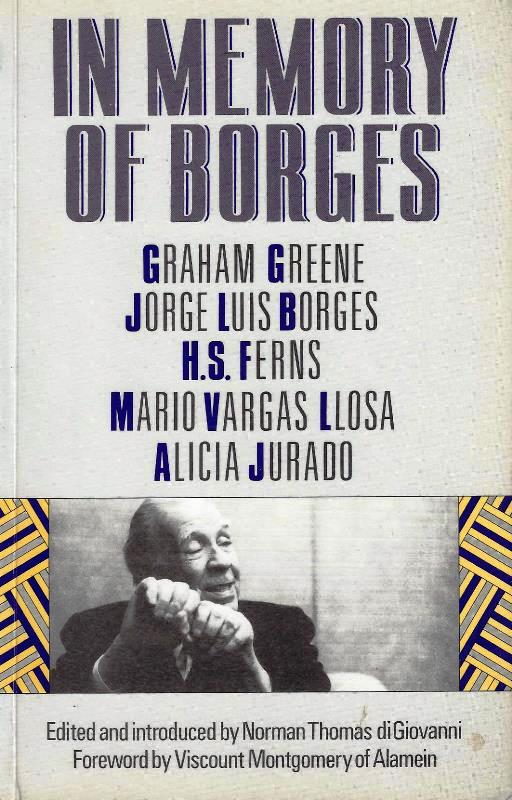 In Memory of Borges
In Memory of Borges
Tiểu thuyết bắt buộc phải “mua vui thì cũng được vài trống canh”?
It is essential that a novel be enjoyed?
[Graham] Greene: Tôi không chắc. Những quả có cái
gọi là thú đau thương ở nơi người đọc.
I am not sure. There may be a certain masochism in the reader.
Nhân vật đàn bà nào ông khoái nhất trong những cuốn tiểu thuyết của ông?
Chắc là độc giả không đồng ý với tôi, nhưng có
thể nhân vật trong Kết Thúc Một Chuyện Tình, The End of the Affair.
Tôi nhận được 1 lời khen từ Theodora Benson, một nữ văn sĩ, cùng
thời với tôi. Bà viết, không phải tôi viết, mà
là 1 người đàn bà giúp tôi viết. Tuyệt.
Có lẽ đã đến lúc cần nghiêm túc nghĩ đến
việc mở
một chuyên đề đích thực về Cioran :p
Blog NL
Bài viết về Ciroran của Charles Simic thật tuyệt. Gấu cứ tính đi hoài, mà cứ lu bu hoài.
Mới lật ra đi 1 đường loáng thoáng, vớ được câu này thật tuyệt:
Con người, bị đá văng ra khỏi Thiên Đàng, với 1 tí
tưởng tượng, đủ cho nó cảm thấy đời mình sao rất đỗi bi thương!
Ui chao, hồi còn trẻ, bị em bỏ, bị cuộc chiến hành, không
làm sao dám bỏ chạy, đúng là tâm trạng
Gấu khi đó.
Những ngày Mậu Thân căng thẳng,
Đại Học
đóng cửa, cô bạn về quê, nỗi nhớ bám riết vào da thịt thay cho cơn bàng
hoàng
khi cận kề cái chết theo từng cơn hấp hối của thành phố cùng với tiếng
hỏa tiễn
réo ngang đầu. Trong những giờ phút lặng câm nhìn bóng mình run rẩy
cùng với
những thảm bom B52 rải chung quanh thành phố, trong lúc cảm thấy còn
sống sót,
vẫn thường tự hỏi, phải yêu thương cô bạn một cách bình thường, giản dị
như thế
nào cho cân xứng với cuộc sống thảm thương như vậy...
Bạn đọc TV để ý, không có chấm câu. Câu văn dài thòng, như bè rau ruống!
Cô bạn, cô phù dâu ngày nào, Gấu gặp
lại ở hải ngoại. Cô phán, cực kỳ bi thương, cực kỳ hạnh phúc,
tại làm sao mà bao nhiêu năm trời, tình cảm của
anh dành cho tôi vẫn như ngày nào.
Nhờ gặp lại cô, Gấu viết lại được, không chỉ thế, mà còn làm được tí thơ!
Bài viết về cô, Cầm Dương Xanh, được một vị nữ độc giả, Bắc
Kít, Hà Lội, mê quá, bệ ngay về trang FB của cô.
Cô tình cờ thấy trang TV, trong khi lướt net, tìm tài liệu về Camus.
Cầm
Dương Xanh
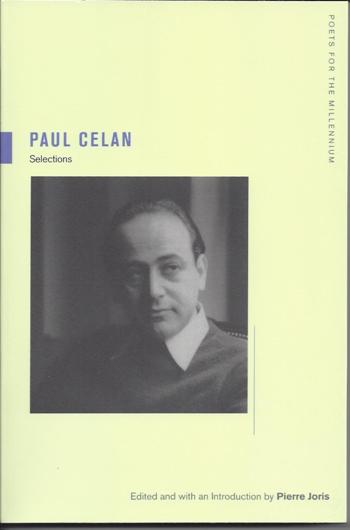
ENCOUNTERS
WITH PAUL CELAN
E. M. CIORAN
Précis de decomposition, my first book written in
French,
was published in I949 by Gallimard. Five works of mine had been
published in
Romanian. In 1937, I arrived in Paris on a scholarship from the
Bucharest
Institut francais, and I have never left. It was only in I947, though,
that I
thought of giving up my native language. It was a sudden decision.
Switching
languages at the age of thirty-seven is not an easy undertaking. In
truth, it
is a martyrdom, but a fruitful martyrdom, an adventure that lends
meaning to
being (for which it has great need!). I recommend to anyone going
through a
major depression to take on the conquest of a foreign idiom, to
reenergize
himself, altogether to renew himself, through the Word. Without my
drive to conquer
French, I might have committed suicide. A language is a continent, a
universe,
and the one who makes it his is a conquistador. But let us get to the
subject.
...
The German
translation of the Précis proved
difficult. Rowohlt, the publisher, had engaged an unqualified woman,
with
disastrous resuits. Someone else had to be found. A Romanian writer,
Virgil Ierunca,
who, after the war, had edited a literary journal in Romania, in which
Celan's
first poems were published, warmly recommended him. Celan, whom I knew
only by
name, lived in the Latin quarter, as did 1. Accepting my offer, Celan
set to
work and managed it with stunning speed. I saw him often, and it was
his wish
that I read closely along, chapter by chapter, as he progressed,
offering
possible suggestions. The vertiginous problems involved in translation
were at that
time foreign to me, and I was far from assessing the breadth of it.
Even the
idea that one might have a committed interest in it seemed rather
extravagant
to me. I was to experience a complete reversal, and, years later, would
come to
regard translation as an exceptional undertaking, as an accomplishment
almost
equal to that of the work of creation. I am sure, now, that the only
one to
understand a book thoroughly is someone who has gone to the trouble of
translating it. As a general rule, a good translator sees more clearly
than the
author, who, to the extent that he is in the grips of his work, cannot
know its
secrets, thus its weaknesses and its limits. Perhaps Celan, for whom
words were
life and death, would have shared this position on the art of
translation.
In 1978,
when Klett was reprinting Lehre vom Zerfall
(the German Précis), I was asked to correct any errors
that might exist. I was
unable to do it myself, and refused to engage anyone else. One does not
correct Celan. A few months before he
died, he said to me that he would like to review the complete text.
Undoubtedly, he would have made numerous revisions, since, we must
remember,
the translation of the Précis dates
back to the beginning of his career as a translator. It is really a
wonder that
a noninitiate in philosophy dealt so extraordinarily well with the
problems
inherent in an excessive, even provocative, use of paradox that
characterizes
my book.
Relations
with this deeply torn being were not simple. He clung to his biases
against one
person or another, he sustained his mistrust, all the more so because
of his
pathological fear of being hurt, and everything hurt him. The slightest
indelicacy, even unintentional, affected him irrevocably. Watchful,
defensive
against what might happen, he expected the same attention from others,
and
abhorred the easygoing attitude so prevalent among the Parisians,
writers or
not. One day, I ran into him in the street. He was in a rage, in a
state
nearing despair, because X, whom he had invited to have dinner with
him, had
not bothered to come. Take it easy, I said to him, X is like that, he
is known
for his don't-give-a-damn attitude. The only mistake was expecting him.
Celan,
at that time, was living very simply and having no luck at all finding
a decent
job. You can hardly picture him in an office. Because of his morbidly
sensitive
nature, he nearly lost his one opportunity.
The very day
that I was going to his home to lunch with him, I found out that there
was a
position open for a German instructor at the Ecole normale supérieure,
and that
the appointment of a teacher would be imminent. I tried to persuade
Celan that
it was of the utmost importance for him to appeal vigorously to the
German
specialist in whose hands the matter resided. He answered that he would
not do
anything about it, that the professor in question gave him the cold
shoulder,
and that he would for no price leave himself open to rejection, which,
according to him, was certain. Insistence seemed useless.
Returning
home, it occurred to me to send him by pneumatique,
a message in which I pointed out to him the folly of allowing such an
opportunity
to slip away. Finally he called the professor, and the matter was
settled in a
few minutes. "I was wrong about him," he told me later. I won't go so
far as to propose that he saw a potential enemy in every man; however,
what was
certain was that he lived in fear of disappointment or outright
betrayal. His
inability to be detached or cynical made his life a nightmare. I will
never
forget the evening I spent with him when the widow of a poet had, out
of
literary jealousy, launched an unspeakably vile campaign against him in
France
and Germany, accusing him of having plagiarized her husband. "There
isn't
anyone in the world more miserable than I am," Celan kept saying. Pride
doesn't soothe fury, even less despair.
Something
within him must have been broken very early on, even before the
misfortunes
which crashed down upon his people and himself. I recall a summer
afternoon
spent at his wife's lovely country place, about forty miles from Paris.
It was
a magnificent day.
Everything
invoked relaxation, bliss, illusion. Celan, in a lounge chair, tried
unsuccessfully to be lighthearted. He seemed awkward, as if he didn't
belong,
as though that brilliance was not for him. What can I be looking for
here? he
must have been thinking. And, in fact, what was he seeking in the
innocence of
that garden, this man who was guilty of being unhappy, and condemned
not to
find his place anywhere? It would be wrong to say that I felt truly ill
at
ease; nevertheless, the fact was that everything about my host,
including his
smile, was tinged with a pained charm, and something like a sense of
nonfuture.
Is it a
privilege or a curse to be marked by misfortune? Both at once. This
double face
defines tragedy. So Celan was a figure, a tragic being. And for that he
is for
us somewhat more than a poet .
E. M. Cioran, "Encounters
with
Paul Celan," in Translating Tradition: Paul Celan in France, edited by
Benjamin Hollander (San Francisco: ACTS 8/9,1988): 151-52.
Is it a
privilege or a curse to be marked by misfortune? Both at once. This
double face
defines tragedy. So Celan was a figure, a tragic being. And for that he
is for
us somewhat more than a poet .
Đặc quyền,
hay trù ẻo, khi nhận "ân sủng" của sự bất hạnh?
Liền tù tì cả
hai!
Cái bộ mặt
kép đó định nghĩa thế nào là bi kịch.
Và như thế, Celan là 1 hình tượng, một
con người bi thương.
Và như thế, ông bảnh hơn nhiều, chứ không "chỉ là 1 nhà
thơ"!
Book of Fantasy
Note: Bài viết này, nhờ Văn Học
đưa lên lưới, đọc lại được, bằng cách chụp. Đọc, không
nhận ra đã từng viết.
Thú nhất, là cái mẩu viết về phê bình gia, trong bài tạp ghi.
RIP
Note: Trong nước mà sao rành thế?
Ngoài nước chưa thấy báo nào loan tin.
Nếu phải đặt
vào thế tam giác, với ba đỉnh, Gatsby-Le
Grand
Meaulnes-Một Chủ Nhật Khác, thì MCNK bảnh nhất, vì cái nền của
nó, là
cuộc
chiến Mít. Trong đời thực, Alain-Fournier,
trung
uý, tử trận năm 28 tuổi, tại khu rừng Saint-Rémy, ngày 22 tháng Chín
năm 1914.
Kiệt nhân vật của MCNK thì bị lầm là VC và bị bắn chết, khi đang ở nhà
thương,
mò ra rừng Đà Lạt, ngó thông, nhưng
TTT, sĩ quan VNCH thì chết vì bịnh ở Mẽo.
Nếu coi
cuộc chiến khốn kiếp là Ngày Hội
Nhân Gian thì Một Chủ
Nhật Khác lại bảnh nhất trong những cuốn bảnh nhất, so với Anh
Môn Vĩ
Đại và Gatsby Vĩ Đại!
GCC thực sự không tin, cõi văn Mít lại có 1 cuốn như Một Chủ Nhật
Khác.
Khủng nhất, là đoạn Kiệt tiễn Hiền đi, rồi lại trở về, với vợ con, với
cuộc
chiến, để... chết.
Như vậy là Kiệt đã đi tới cõi
bên kia, lo xong cho Hiền, rồi lại trở lại cõi
bên này.
Trong vương quốc của những
người đã chết
Tôi vẫn thường tha thẩn đi về
Thơ của Gấu
Gấu ngờ rằng nơi mà Kiệt đưa
Hiền tới, rồi trở về, để chết, cùng
với cuộc chiến, là Lost Domain, Miền Đã Mất, ở trong Le
Grand
Meaulnes.
Bài Giáng cũng có một cõi Lost Domain của ông,
là thời gian 15 năm
chăn dê, vui đùa với chuồn chuồn, châu chấu, trước khi trở về đời, làm
Ông
Khùng giữa cõi Bọ.
Hậu thế sau này, có thể sẽ coi Một Chủ Nhật Khác, là tác phẩm
số 1 của
thời đại hoàng kim Miền Nam VNCH, hẳn thế!
Hơn thế, chứ sao lại hẳn thế!
*****
Date: Thu, 25 Mar 2010 20:04:13 +0000
Toi cung ban rat nhieu viec, tu "Viet", cho toi lam viec cho nha` tho, roi co`n ch^`ng, con , nhung viec khong ten nua.
"Anh có thật? Ngày chủ nhật kia có thật? Ngôi
chùa lộng gió có thật? Ngôi nhà trong đêm
thơ mộng khủng khiếp nhớ đời có thật? Em hỏi hoài... Những
tiếng nổ ở phi trường buổi sáng em đi thì chắc chắn có
thật. Chúng nổ inh trong tai em, gây rung chuyển hết thẩy. Những
nụ hôn chia biệt cũng có thật, còn hằn rát bên
má em, không biết bao giờ phai...
Chiều nay Saigon đổ trận mưa đầu mùa. Trên ấy mưa chưa? Anh
vẫn ngồi quán cà phê buổi chiều? Anh có lên
uống rượu ở P.? Anh có trở lại quán S., với ai lần nào
không? Sắp đến kỳ thi. Năm nay em không có mặt để nhìn
trộm anh đi đi lại lại trong phòng, mặc quân phục đeo súng
một cách kỳ cục. Anh có đội thêm nón sắt không?
Năm đầu tiên em gọi anh là con Gấu. Hỗn như Gấu, đối với nữ
sinh viên. Em có ngờ đâu anh là Yêu Râu
Xanh...
MCNK
Cái mail có thiệt. Mới kiếm lại được.
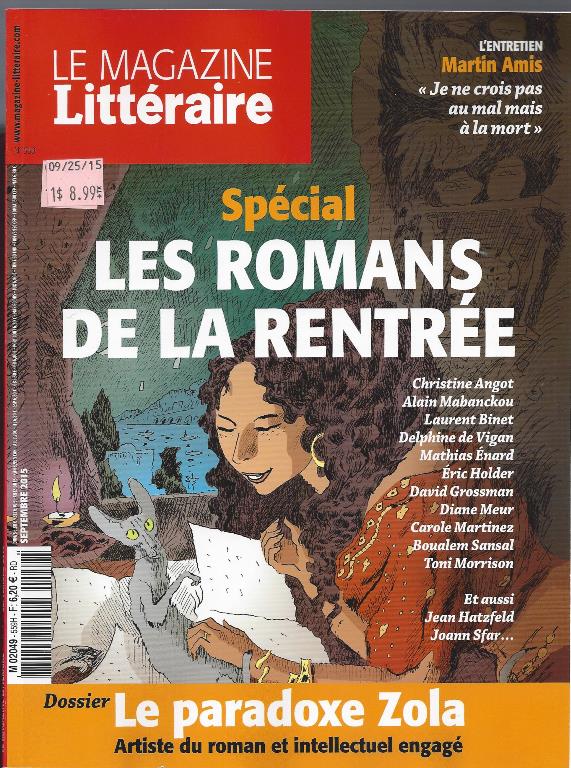
Tưởng người đã đi xa
Nhưng người vưỡn lại về!
Tôi không tin cái ác, tôi tin cái chết
Je ne crois pas au mal, je crois à la mort.
Bài phỏng vấn Amis là chính của số báo. Đọc OK
lắm. Amis là nhà văn mũi lõ Tây Phương đầu tiên
đụng vô đề tài Gulag. Như… Sến, thầy của ông là
Nabokov. Nabokov gần như không bao giờ đề cập tới đề tài này,
trong giả tưởng của mình. Ngược hẳn trò. Đây là
1 trong những câu hỏi hắc búa của tờ ML.
Từ từ, Gấu lèm bèm tiếp.
TV đã giới thiệu bài viết trên tờ Obs về cuốn này.
Auschwitz Tháng Tư 1942
Obs 20 & 26 Aout 2015
Tiếng Đức là tiếng mẹ đẻ của Lò Thiêu
Hãy nhớ rõ 1 điều, tiếng Đức không ngây thơ vô tội trước Lò Thiêu
G. Steiner: Phép Lạ Hổng
Martin Amis : "L’allemand est la langue maternelle de l’Holocauste"
http://bibliobs.nouvelobs.com/romans/20150818.OBS4359/martin-amis-l-allemand-est-la-langue-maternelle-de-l-holocauste.html
Tại làm sao mà ông
đặt tít cho cuốn sách của mình, là Miền Nhận
Hàng [la Zone d’intérêt: Miền Nam nhận họ, Miền Bắc nhận
hàng]?
[Note: Câu này, bản in trên báo có tí khác, bản trên net]
Tôi tính gọi nó là “Tuyết màu hạt dẻ”,
nhưng Simenon đã chơi cái tít “Tuyết dơ” rồi.
Nabokov phán, có hai thứ tít. Thứ lòi ra sau
khi viết xong, như người ta đặt tên cho đứa bé, khi nó
ra đời.
Thứ kia mới khủng, nó có từ trước, ngay từ đầu, nó cắm mẹ vô não của bạn
từ hổi nào hồi nào. Đây là trường hợp cuốn của tôi. Vùng nhận hàng, hay,
Miền Lợi Tức, là công thức mà Nazi sử dụng để chỉ Miền Lò Thiêu. Một cái
tít rõ ràng ngửi ra tiền.
Ui chao, thảo nào Bắc Kít gọi, Đàng Trong: Nhà
của chúng. Đàng Ngoài, là, tính nhượng
cho Tẫu!
Amis quả đúng là 1 nhà văn xì
căng đan. Cuốn sách mới xb của ông, bị Gallimard vứt vô
thùng rác, dù đây là nhà xb bạn
quí của ông. Cũng đếch thè m nói năng, phôn, phiếc gì hết.
Rồi 1 nhà xb Đức cũng chê. Sau cùng, nhà Calmann-Lévy
in nó. Theo tin hành lang, Gallimard chê, vì không
tới tầm.
Nhưng cuốn này, quả là khủng.
Gấu mê nhất cuốn Nhà Hội của ông. Có gần đủ sách
của ông, nhưng thú thực, không chịu nổi!
Trong số các quy luật sinh học,
tôi nhớ có cái quy luật này liên quan tới
tiến hóa: đó phải là sự tiến hóa của cả quần
thể. Không thể có tiến hóa ở từng cá thể riêng
lẻ.
Vương Trí Nhàn
Nhảm.
Quần thể tiến hóa sao bằng thời chống Mỹ Kíu Nước.
Đẻ ra thứ văn học sống bằng máu của kẻ khác.
Quần thể là đàn cừu. Không nghe Nobel Mít phán, sao?
Kundera chẳng đã kể, ném 1 con cừu xuống biển, là cả đàn cừu cứ thế nhảy theo? (1)
(1)
Kundera
coi tiểu thuyết là
sản phẩm của Âu châu. Và nó là một cuộc hôn nhân giữa sự không-nghiêm
trọng và
chuyện chết người. Chúng ta sẽ cùng với ông chứng kiến một cảnh trong
"Cuốn Sách Thứ Tư" của Rabelais. Giữa biển cả, chiếc thuyền của
Pantagruel gặp một con tầu chở cừu của mấy người lái buôn. Một người
trong bọn
thấy Panurge mặc quần không túi, cặp kiếng gắn lên nón, đã lên tiếng
chế riễu,
gọi là anh chàng mọc sừng. Panurge lập tức trả miếng: anh mua một con
cừu, rồi
ném nó xuống biển. Vốn có thói quen làm theo con đầu đàn, những con kia
cứ thế
nhào xuống nước....
Khi Koestler viết Bóng Đêm giữa Ban Ngày, ông chống
lại toàn thể tập thể, là… nhân loại.
Tức là đã tiên tri ra được sự cáo chung của chủ nghĩa CS.
Một đòn "cách sơn đả ngưu", như GCC đã từng viết, khi đọc 1 cuốn tiểu sử của Koestler:
"The final rout of the Soviet imperium in 1989-1990 began with the publication of Darkness at Noon"
David Cesarani: [Tiểu sử] Arthur Koestler: Một cái đầu không nhà, The homeless mind.
[Cú hỏng cẳng sau chót của uy quyền tối thượng của Xô
Viết, vào thời kỳ 1989-1990, bắt đầu, khi Bóng Đêm Giữa
Ban Ngày của Koestler ra lò, 1940].
Đúng là đòn "cách sơn đả ngưu"!
Từ bao nhiêu năm trước,
với con mắt cú vọ của một ký giả khi nhìn vào
sự kiện đời thường, tức diễn tiến những vụ án tại Moscow, mà
đã ngửi ra được tiếng chuông gọi hồn của chủ nghĩa Cộng Sản,
thì quả là cao thủ!
Khi Nguyễn Huy Thiệp viết Tướng Về Hưu, ông đã tiên tri
ra được Cái Ác Bắc Kít sẽ ngự trị toàn xứ Mít,
nảy sinh từ những con heo được nuôi bằng thai nhi.
Ông Vương Viên Ngoại này, do không biết viết sáng
tác là gì, nên phán nhảm.
Nhận xét về Nguyên Ngọc, qua nét vẽ của Xuân Sách
cũng sai, và làm sai luôn, những hậu quả sau đó.
NN cũng 1 thứ sống bằng máu của kẻ khác.
Những sáng tác của ông đâu phải sáng tác,
mà xúi người khác chết, cho ông ta sống.
Cái thứ sáng tác, thứ thật, là tiên tri
ra được sự thực sắp tới, do 1 cá nhân, bằng 1 cách nào
đó, thở trước hơi thở của quần thể.
Thơ tự do của TTT, lúc mới xuất hiện mà chẳng bị chửi tơi bời sao?
Isn't "we" the problem, that little words "we" (which I distrust so profoundly, which I would forbid the individual man to use).
Cái từ "chúng tôi" gây phiền phức, phải chăng,
cái từ nhỏ xíu "chúng tôi" (mà tôi
quá ghê tởm, đếch tin cậy, và cấm 1 cá nhân
1 con người xử dụng) -WITOLD GOMBROWICZ
Sacrifice the children-an old story, pre-Homeric-so that the nation will endure, to create a legend.
-ALEKSANDER WAT
Xúi con nít hy sinh, để có được những anh hùng Núp, trò này xưa lắm rồi.
Mistaken ideas always end in bloodshed, but in every case it is someone else's
blood. This is why our thinkers feel free to say just about everything.
-CAMUS
Tư tưởng lầm lạc luôn chấm dứt bằng máu, của kẻ khác, không phải của những tên như NN.
Levi Page
Bài mới nhất về Primo Levi trên The New Yorker
His friend Edith Bruck, herself a survivor of Auschwitz and Dachau,
said, “There are no howls in Primo’s writing—all emotion is
controlled—but Primo gave such a howl of freedom at his death.” This is
moving, certainly, and perhaps true. Thus one consoles oneself, and
consolation is necessary: like much suicide, Levi’s death is only a
silent howl, because it voids its own echo. It is natural to be
bewildered, and it is important not to moralize. For, above all, Job
existed and was not a parable. ♦
Không có gầm rú, gào thét trong cái
viết của Primo Levi - mọi xúc động đều được kiềm chế - nhưng Primo
đem đến tiếng gầm rú của tự do, với cái chết của mình.
Rằng, con người tự an ủi mình, và an ủi thì cần thiết:
giống như tự làm thịt mình, cái chết của Levi chỉ là
tiếng gầm rú của im lặng…
Thảo nào GCC cứ tính thử hoài, tiếng gầm rú của im lặng!
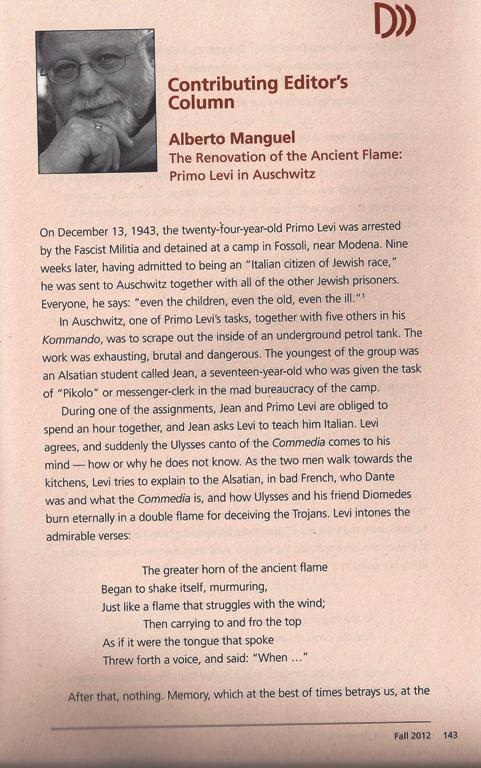
Làm mới Ngọn Lửa Cũ:
Primo Levi ở Lò Thiêu
Vào ngày 13 tháng Chạp 1943, Primo Levi, 24 tuổi, bị
Phát Xít Ý bắt. Chín tuần sau, khai là
công dân Ý gốc Do Thái, bèn bị tống vô
Lò Thiêu với tất cả những tù nhân Do Thái
khác. Tất cả, ngay cả trẻ con, người già, người bịnh.
Trong 1 lần cùng làm 1 ca với Jean, một tù nhân
17 tuổi, anh này nhờ Levi chỉ cho vài chiêu tiếng Ý,
thế là "Kịch Trời" của Dante bật ra trong đầu Levi.
Cái ngọn ngọn lửa, ngọn lửa cũ
Bắt đầu lắc lư, lầm bầm, lầu bầu
Như thể ngọn lửa đang chống cự với gió
Mang tới mang lui
Như cái lưỡi
Thì thào lời, “Khi mà….”
Chỉ có thế, là hết. Như thể hồi ức, vào những lúc
thật thầu sầu của nó, vưỡn phản bội chúng ta
Levi sometimes said that he felt a larger shame—shame
at being a human being, since human beings invented the world of the concentration
camp. But if this is a theory of general shame it is not a theory of original
sin. One of the happiest qualities of Levi’s writing is its freedom from
religious temptation. He did not like the darkness of Kafka’s vision, and,
in a remarkable sentence of dismissal, gets to the heart of a certain theological
malaise in Kafka: “He fears punishment, and at the same time desires it .
. . a sickness within Kafka himself.” Goodness, for Levi, was palpable and
comprehensible, but evil was palpable and incomprehensible. That was the
healthiness within himself.
How Primo Levi survived
Levi không chịu nổi Kafka. Ông nói ra điều này, khi dịch Kafka:
Một
sự hiếp đáp có tên là Kafka
Franz Kafka & Primo
Levi, tại sao?
Không phải tôi chọn,
mà là nhà xb. Họ đề nghị và tôi chấp
thuận. Kafka không hề là tác giả ruột của tôi. Nói đúng ra, thì là thế
này: Tôi
đã hơi coi nhẹ một việc dịch như vậy, bởi vì tôi không nghĩ, là mình sẽ
phải
cực nhọc với nó. Kafka không hề là một trong những tác giả mà tôi yêu
thích.
Tôi nói lý do tại sao: Không có gì là chắc chắn, về chuyện, những tác
phẩm mà
mình thích, thì có gì giông giống với những tác phẩm của mình, mà
thường là
ngược lại. Kafka đối với tôi, không phải là chuyện dửng dưng, hoặc buồn
bực, mà
là một tình cảm, một cảm giác thủ thế, phòng ngự. Tôi nhận ra điều này
khi dịch
Vụ Án. Tôi cảm thấy như bị cuốn sách hiếp đáp, bị nó tấn công. Và tôi
phải bảo
vệ, phòng thủ. Bởi vì đây là một cuốn sách rất tuyệt. Nhưng nó đâm thấu
bạn,
giống như một mũi tên, một ngọn lao. Độc giả nào cũng cảm thấy như bị
đưa ra
xét xử, khi đọc nó. Ngoài ra, ngồi thoải mái trong chiếc ghế bành với
cuốn sách
ở trên tay, khác hẳn chuyện hì hục dịch từng từ, từng câu. Trong khi
dịch tôi
hiểu ra lý do của sự thù nghịch (hostile) của tôi với Kafka. Đó là do
bản năng
tự vệ, phản xạ phòng ngự, do sợ hãi gây
nên. Có thể, còn một lý do xác đáng
hơn: Kafka là người Do Thái, tôi cũng là Do Thái.
Vụ Án bắt đầu bằng một chuyện bắt giam không dự đoán
trước được, và chẳng thể nào biện minh, nghề nghiệp viết lách
của tôi bắt đầu bằng một vụ bắt bớ không lường trước được và
chẳng thể biện minh. Kafka là một tác giả mà tôi
ngưỡng mộ, tuy không ưa, tôi sợ ông ta, giống như bị sao
quả tạ giáng cho một cú bất thình lình, hoặc
bị một nhà tiên tri nói cho bạn biết, bạn chết vào
ngày nào tháng nào.
Note: Bài dịch này, hân hạnh được Sến để mắt tới, cho đăng trên talawas. Tks. NQT
Đâu dễ gì được Sến để mắt tới!
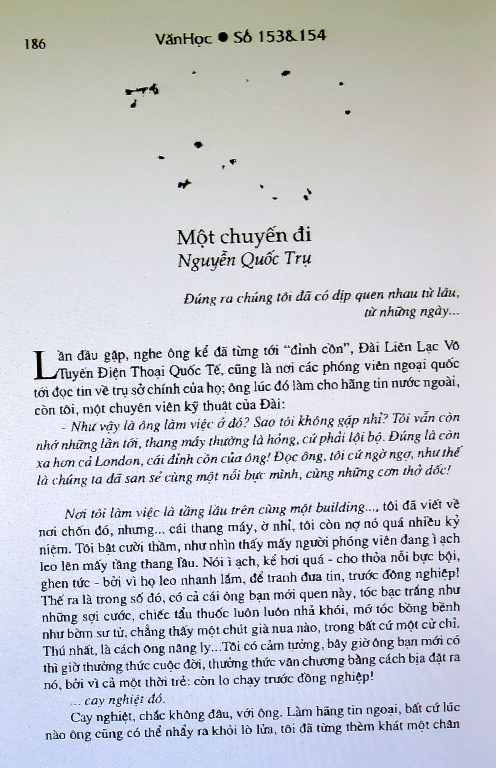 Một chuyến đi
Một chuyến đi
Bài viết chót cho Văn Học NMG.
Viết về mấy ông bạn Trúc Chi, Tạ Chí Đại Trường... nhưng thực sự là về Nguyễn Tuân.
Cái tít là từ Nguyễn Tuân.
Nguyen Tuan...
07/07/2010
"Nguyễn Tuân nổi tiếng với tùy bút, và tùy
bút Nguyễn Tuân, nổi đình nổi đám vì chất
khinh bạc của nó. Những người viết sau này, không thể
nào tới được cái chất khinh bạc "ròng" như vậy, đành
phải thay bằng giọng thầy đời, giọng uyên bác, giọng có
đi Tây, đi Tầu, có ở Paris, có biết khu "dân sinh"
Saint-Germain-des-Prés... Ra cái điều đi hơn Nguyễn Tuân!
Trúc Chi có thể "hơn" Nguyễn Tuân ở cái khoản
đi, nhưng "may thay", chân truyền Nguyễn Tuân ở cái khoản
khinh bạc: khinh bạc như là cực điểm của lòng nhân hậu.
Lòng nhân hậu, hay hồn nhân hậu này, theo tôi
nên "dịch ra tiếng Tây" bằng chữ la nostalgie, vốn thường được
hiểu là hoài hương."
"Mot chuyen di" cua GNV hay qua. Nguoi trong nuoc cung dang viet hang loat
ve Nguyen Tuan, nhung khong hieu sao, doc ho cu co cam giac nhu dang nghe
mot nhom nguoi noi chuyen voi nhau trong mot... dam gio^~.
Mít vs Lò Thiêu Người
The Gulag can be regarded as the quintessential expression of modern Russian
society. This vast array of punishment zones across Russia, started in Tsarist
times and ending in the Soviet era, left a legacy on the Russian quest for
identity. In Russia, prison is usually referred to as the malinkaya zone
(small zone). The Russians have an expression for freedom: bolshaya zona,
(big zone). The distinction being that one is slightly less humane than the
other. But which one? A Russian friend once said, "First they make you work
in the factory, then they finish you off in prison." By the 1950s, the Gulag
played an integral role in the development of the Soviet economy. In fact,
Stalin used these camps as a source of economic stimulation, to excavate
the vast natural resources of the east and to stimulate growth and settlement
across the twelve time zones of the former USSR. The majority of mines, timber
industries, factories, and Russia's prized oil and gas fields were all discovered
through convict labour. In effect, almost every imaginable industry in Russia
today exists because of Stalin's policy. This photo was taken at the state
theatre in Vorkuta, a large city in the far north of Russia, beyond the Arctic
Circle, and one of the largest penal colonies created by the Soviet bureaucracy.
Today, survivors-both prisoner and guard-and their descendants still live
in this city. The woman was the lead in a play by Ostrovsky: Crazy Money.
www.donaldweber.com
Spring 2015
THE NEW QUARTERLY
Nếu không có cú dậy cho VC một bài học,
lũ Ngụy "vẫn sống ở Trại Tù", cùng với con cái của chúng.
Tờ Điểm Sách Nữu Ước, NYRB, có bài của Timothy Snyder,
về “Thế giới của Hitler”.
Tờ Người Nữu Ước, Adam Gopnik có bài
“Những ám ảnh của Hitler”.
Tin Văn post cả hai, và thủng thẳng
đi vài đường về nó. Một câu chuyện mới về Lò
Thiêu, như Adam Gopnik, tác giả bài viết trên tờ
Người Nữu Ước, phán.
Cuốn sách những sinh vật tưởng tượng
Viết mỗi ngày
In
March 1984, Jorge Luis Borges began a series of radio “dialogues” with
the Argentinian poet and essayist Osvaldo Ferrari, which have now been
translated into English for the first time
Everything exists in order to end up in a book, or everything leads to a book. nybooks.com
Cuốn này, Gấu mua từ hồi nào rồi. Câu NYRB trích, là của Mallarmé
Thế giới hiện
hữu để tiến tới một cuốn sách đẹp
Le monde
existe pour
aboutir à un beau livre.
Mallarmé.
Note: Mới tậu. Đi liền cú,
Borges lèm bèm về Kafka, nhân TV đang dịch Trước Pháp Luật:
Kafka Could
Be Part of Human Memory
Kafka có thể [có, là] phần hồi ức con người
Mới ra lò,
2014.
Tên nhà xb mới
thú: Seagull Books
www.seagullbooks.org
"Phần hồi ức con người" của Kafka, thì cũng giống như 1954 của TTT, với
hồi ức Mít: Chúng ta không thể nào hiểu được 1954 nếu thiếu "Bếp Lửa",
thí dụ vậy,
Ferrari hỏi
Borges, nghe người ta nói là, chúng ta không thể hiểu được lịch sử của
thời
chúng ta, nếu thiếu sự giúp đỡ của Kafka, Borges bèn trả lời, thì đúng
như thế,
nhưng quá thế nữa, Kafka quan trọng hơn lịch sử của chúng ta!
Ui chao em của
GCC, HA, trách Gấu, mi viết hoài về TTT, ở trên net, rồi mi chết,
thì mất liêu luôn, sao không chịu in ra giấy, vì TTT còn quan trọng hơn
cả hồi ức
Mít!
Hà, hà!
FERRARI. But
we are told that we cannot make a faithful interpretation of our times
without Kafka's help.
BORGES. Yes,
but Kafka is more important than our times....
Borges
Conversations
Hiền đâu rồi?
Duy, bạn Kiệt có lần hỏi chàng.
Độc giả MCNK cũng thắc mắc.
Liệu TTT, tác giả có khi nào thắc mắc?
Kiệt trả lời Thuỳ, bà vợ, anh đưa cô ta tới chỗ đó đó, rồi lại trở về với em!
Trong chưởng Kim Dung, cũng có nhân vật Khúc Phi Yến, xuất hiện 1 lần, rồi biến mất.
Manguel đi 1 bài thật là tuyệt vời về đề tài này.
TV post ở đây, rồi đi 1 đường lèm bèm sau.
Book of Fantasy
Saigon ngày nào của GCC
Bài Tạp Ghi đầu tiên viết cho Văn Học NMG. Tháng 9/1996.
Cái hình Saigon Kids, của Dirck Halstead, Sếp UPI ngày
nào của Gấu, lấy trên net
http://www.gio-o.com/LyOcBR/LyOcBrWisTom2baitho.htm
The Nobel Prize in Literature 1996 was awarded
to Wislawa Szymborska "for poetry that with ironic precision allows the historical
and biological context to come to light in fragments of human reality".
Giải Thưởng Nobel Văn Chương 1996 dành cho Wislawa Szymborska "vì
nền thi ca trào phúng chính xác cho phép
văn cảnh thuộc lịch sử và sinh học trong những mảnh đời nhân
thế được soi sáng".
Lý Ốc dịch
Theo GCC, dịch giả không thèm để ý đến “phân tích loại từ”, analyse grammaticale.
Trong cụm từ trên, precison là danh từ, ironic là tĩnh
từ, bổ nghĩa [modify] cho precison. Khi dịch ra tiếng Mít, ironic
biến thành danh từ.
Đúng ra phải dịch, đại khái, S được Nobel vì thơ của
bà, với sự chính xác có tính hài
hước, [nó] cho phép cái nội dung mang tính lịch
sử và sinh học, phơi ra trước ánh sáng, trong những
mẩu đoạn của thực tại con người.
Tiếng Việt không phân biệt rõ ràng về tự loại,
nhưng người dịch phải biết, nếu không, độc giả không biết đuờng
nào mà lần!
Hơn nữa 1 vòng hoa Nobel là cả 1 kỳ công của Viện Hàn
Lâm. Làm sao chỉ vài chữ, mà nói lên
được cả hai, một, cõi văn của người được, và một, cái
tôn chỉ của giải Nobel.
Going Home
He came home. Said nothing.
It was clear, though, that something had gone wrong.
He lay down fully dressed.
Pulled the blanket over his head.
Tucked up his knees.
He's nearly forty, but not at the moment.
He exists just as he did inside his mother's womb,
clad in seven walls of skin, in sheltered darkness.
Tomorrow he'll give a lecture
on homeostasis in metagalactic cosmonautics.
For now, though, he has curled up and gone to sleep.
Wislawa Szymborska
Về Nhà
Chàng về nhà. Nín thinh không nói.
Rõ ràng, dù sao, đã có chuyện gì trắc trở.
Chàng nằm dài để nguyên bộ cánh.
Kéo mền trùm kín mít.
Co quắp hai gối chèo queo.
Chàng gần tứ thập, nhưng lắm lúc như em thơ.
Chàng hiện hữu như là bào thai trong bụng mẹ,
gói giữa bảy lớp thành da, ẩn trú trong cõi huyền thiên sâu thẳm.
Ngày mai chàng sẽ đọc một diễn văn
về sự cân bằng trong những chuyến du hành ngoài vũ trụ.
Còn bây giờ, dù sao, chàng cũng đã cuộn mình trôi vào giấc ngủ.
Lý Ốc dịch
Vv “chính xác tiếu lâm”.
Nếu đúng như thế, thì “not at the moment” không thể dịch
là “lắm lúc như trẻ thơ được”, mà phải dịch “không,
vào lúc này”, vì tác giả giải thích,
lúc này, chàng như con sâu nằm trong bụng mẹ,
và đây là ý nghĩa của từ “về nhà”!
The Disquieting Resonance of 'The Quiet
American'
by Pico Iyer
April 21, 2008 5:08 PM ET
Note: Bài viết này, nhờ Văn Học
đưa lên lưới, đọc lại được, bằng cách chụp. Đọc, không
nhận ra đã từng viết.
Thú nhất, là cái mẩu viết về phê bình gia, trong bài tạp ghi.
Mít vs Lò Thiêu Người
The Gulag can be regarded as the quintessential expression of modern Russian
society. This vast array of punishment zones across Russia, started in Tsarist
times and ending in the Soviet era, left a legacy on the Russian quest for
identity. In Russia, prison is usually referred to as the malinkaya zone
(small zone). The Russians have an expression for freedom: bolshaya zona,
(big zone). The distinction being that one is slightly less humane than the
other. But which one? A Russian friend once said, "First they make you work
in the factory, then they finish you off in prison." By the 1950s, the Gulag
played an integral role in the development of the Soviet economy. In fact,
Stalin used these camps as a source of economic stimulation, to excavate
the vast natural resources of the east and to stimulate growth and settlement
across the twelve time zones of the former USSR. The majority of mines, timber
industries, factories, and Russia's prized oil and gas fields were all discovered
through convict labour. In effect, almost every imaginable industry in Russia
today exists because of Stalin's policy. This photo was taken at the state
theatre in Vorkuta, a large city in the far north of Russia, beyond the Arctic
Circle, and one of the largest penal colonies created by the Soviet bureaucracy.
Today, survivors-both prisoner and guard-and their descendants still live
in this city. The woman was the lead in a play by Ostrovsky: Crazy Money.
www.donaldweber.com
Spring 2015
THE NEW QUARTERLY
Nếu không có cú dậy cho VC một bài học,
lũ Ngụy "vẫn sống ở Trại Tù", cùng với con cái của chúng.
Tờ Điểm Sách Nữu Ước, NYRB, có bài của Timothy Snyder,
về “Thế giới của Hitler”.
Tờ Người Nữu Ước, Adam Gopnik có bài
“Những ám ảnh của Hitler”.
Tin Văn post cả hai, và thủng thẳng
đi vài đường về nó. Một câu chuyện mới về Lò
Thiêu, như Adam Gopnik, tác giả bài viết trên tờ
Người Nữu Ước, phán.
The Bloi and the Morlocks
The hero of the novel The Time Machine, which a young writer Herbert
George Wells published in 1895, travels on a mechanical device into an unfathomable
future. There he finds that mankind has split into two species: the Eloi,
who are frail and defenseless aristocrats living in idle gardens and feeding
on the fruits of the trees; and the Morlocks, a race of underground proletarians
who, after ages of laboring in darkness, have gone blind, but driven by the
force of the past, go on working at their rusted intricate machinery that
produces nothing. Shafts with winding staircases unite the two worlds. On
moonless nights, the Morlocks climb up out of their caverns and feed on the
Eloi.
The nameless hero, pursued by Morlocks, escapes back into
the present. He brings with him as a solitary token of his adventure
an unknown flower that falls into dust and that will not blossom on earth
until thousands and thousands of years are over.
Nguỵ vs VC
Nhân vật chính trong cuốn tiểu thuyết “Máy Thời Gian”,
sử dụng cái máy thần sầu du lịch xuyên qua thời gian
tới những miền tương lai không làm sao mà dò được.
Ở đó, anh ta thấy Mít – nhân loại - được chia thành
hai, một, gọi là Ngụy, yếu ớt, ẻo lả, và là những nhà
trưởng giả, bất lực, vô phương chống cự, sống trong những khu
vườn nhàn nhã, ăn trái cây, và một, VC,
gồm những tên bần cố nông, vô sản, sống dưới hầm, địa
đạo [Củ Chi, thí dụ], và, do bao nhiêu đời lao động trong
bóng tối, trở thành mù, và, được dẫn dắt bởi
sức mạnh kẻ thù nào cũng đánh thắng, với sức người sỏi
đá cũng thành cơm, cứ thế cứ thế lao động, để thâu hoạch
chẳng cái gì. Có những cầu thang nối liền hai thế giới,
và vào những đêm không trăng, VC, từ những hang
động, hầm hố, bò lên làm thịt lũ Ngụy.
Nhân vật chính, không tên, bị VC truy đuổi, trốn
thoát được, và trở lại thời hiện tại. Anh ta mang theo cùng
với anh, một BHD, như chứng tích của cuộc phiêu lưu, và
vừa trở lại hiện tại, bông hồng bèn biến thành tro bụi,
và, như…. Cô Sáu trong Tiền Kiếp Của GCC, hàng
hàng đời sau, sẽ có ngày nào đó, bông
hồng lại sống lại…
Who knows?
Hà, hà!
The Tigers of Annam
To the Annamites, tigers, or spirits who dwell in tigers, govern the four
corners of space. The Red Tiger rules over the South (which is located at
the top of maps); summer and fire belong to him. The Black Tiger rules over
the North; winter and water belong to him. The Blue Tiger rules over the
East; spring and plants belong to him. The White Tiger rules over the West;
autumn and metals belong to him.
Over these Cardinal Tigers is a fifth tiger, the
Yellow Tiger, who stands in the middle governing the others, just as the
Emperor stands in the middle of China and China in the middle of the World.
(That's why it is called the Middle Kingdom; that's why it occupies the middle
of the map that Father Ricci, of the Society of Jesus, drew at the end of
the sixteenth century for the instruction of the Chinese.)
Lao-tzu entrusted to the Five Tigers the mission of waging
war against devils. An Annamite prayer, translated into French by Louis Cho
Chod, implores the aid of the Five Heavenly Tigers. This superstition is
of Chinese origin; Sinologists speak of a White Tiger that rules over the
remote region of the western stars. To the South the Chinese place a Red
Bird; to the East, a Blue Dragon; to the North, a Black Tortoise. As we see,
the Annamites have preserved the colors but have made the animals one.
The Sphinx
The Sphinx of Egyptian monuments (called by Herodotus androsphinx, or man-sphinx,
in order to distinguish it from the Greek Sphinx) is a lion having the head
of a man and lying at rest; it stood watch by temples and tombs: and is said
to have represented royal authority. In the halls of Karnak, other Sphinxes
have the head of a ram, the sacred animal of Amon. The Sphinx of Assyrian
monuments is a winged bull with a man's bearded and crowned head; this image
is common on Persian gems. Pliny in his list of Ethiopian animals includes
the Sphinx, of which he details no other features than "brown hair and two
mammae on the breast."
The Greek Sphinx has a woman's head and breasts, the wings
of a bird, and the body and feet of a lion. Some give it the body of a dog
and a snake's tail. It is told that it depopulated the Theban countryside
asking riddles (for it had a human voice) and making a meal of any man who
could not give the answer. Of Oedipus, the son of Jocasta, the Sphinx asked,
"What has four legs, two legs, and three legs, and the more legs it has the
weaker it is?" (So runs what seems to be the oldest version. In time the
metaphor was introduced which makes of man's life a single day. Nowadays
the question goes, "Which anima] walks on four legs in the morning, two legs
at noon, and three in the evening?") Oedipus answered that it was a man 'who
as an infant crawls on all fours, when he grows up walks on two legs, and
in old age leans on a staff. The riddle solved, the Sphinx threw herself
from a precipice.
De Quincey, around 1849, suggested a second interpretation,
which complements the traditional one. The subject of the riddle according
to him is not so much man in general as it is Oedipus in particular, orphaned
and helpless at birth, alone in his manhood, and supported by Antigone in
his blind and hopeless old age.
Trả
lời phỏng vấn của tờ báo Nhật Shûkan Posuto ngày 17/8/1979, ở cao điểm
của làn sóng thuyền nhân Việt Nam lênh đênh trên Biển Đông, triết gia
Pháp Michel Foucault, đồng tham gia Ủy ban vận động "Một chiếc tàu cho
Việt Nam", nhận định rằng di dân sẽ trở thành một vấn nạn đầy đau đớn và
bi thảm của hàng triệu người mà những gì đang xảy ra ở Việt Nam là điềm
báo. Điềm báo ấy đã trở thành hiện thực trong Khủng hoảng Di dân hiện
tại ở châu Âu. Những ngày này, sống ở một trong n... ****
Note: Re Foucalt
2. Michel Foucault: Nguồn
gốc
vấn đề người Việt tị nạn.
Lời người giới thiệu: Sau đây
là chuyển ngữ, từ bản tiếng Pháp, cuộc phỏng vấn đặc biệt triết gia
người Pháp,
Michel Foucault, đăng trên tạp chí Nhật Bản, Shukan posuto, số đề ngày
17 tháng
Tám 1979. Nhan đề tiếng Nhật: "Nanmin mondai ha 21 seiku minzoku daiidô
no
zencho da." ("Vấn đề người tị nạn là điềm báo trước cuộc di dân lớn
lao mở đầu thế kỷ 21"). Người phỏng vấn: H. Uno. Người dịch ra tiếng
Pháp:
R. Nakamura.
Người phỏng vấn: Theo ông,
đâu là cội nguồn của vấn đề người Việt tị nạn?
Michel Foucault: Việt Nam
không ngừng bị chiếm đóng, trong một thế kỷ, bởi những thế lực quân sự
như
Pháp, Nhật, và Mỹ. Và bây giờ cựu-Miền Nam bị chiếm đóng bởi cựu-Miền
Bắc. Chắc
chắn, cuộc chiếm đóng Miền Nam bởi Miền Bắc thì khác những cuộc chiếm
đóng
trước đó, nhưng đừng quên rằng, quyền lực Việt Nam của Miền Nam hiện
nay, là thuộc
về Việt Nam của Miền Bắc. Suốt một chuỗi những chiếm đóng trong một thế
kỷ như
thế đó, những đối kháng, xung đột quá đáng đã xẩy ra ở trong lòng dân
chúng.
Con số những người cộng tác với kẻ chiếm đóng, không nhỏ, và phải kể cả
ở đây,
những thương gia làm ăn buôn bán với những người bản xứ, hay những công
chức
trong những vùng bị chiếm đóng. Do những đối kháng lịch sử này, một
phần dân
chúng đã bị kết án, và bị bỏ rơi.
-Rất nhiều người tỏ ra nhức
nhối, vì nghịch lý này: trước đây, phải hỗ trợ sự thống nhất đất nước
Việt Nam,
và bây giờ, phải đối diện với hậu quả của việc thống nhất đó: vấn đề
những
người tị nạn.
Nhà nước không có quyền sinh
sát - muốn ai sống thì được sống, muốn ai chết thì người đó phải chết -
với dân
chúng của mình cũng như dân chúng của người – của một xứ sở khác. Chính
vì
không chấp nhận một thứ quyền như thế, mà [thế giới đã] chống lại những
cuộc
dội bom Việt Nam của Hoa Kỳ và, bây giờ, cũng cùng một lý do như vậy,
giúp đỡ
những người Việt tị nạn.
-Có vẻ như vấn đề người Căm
Bốt tị nạn khác với của người Việt tị nạn?
Chuyện xẩy ra ở Căm Bốt là
hoàn toàn quái đản trong lịch sử hiện đại: nhà cầm quyền tàn sát sân
chúng của
họ, theo một nhịp độ chưa từng có, chưa từng xẩy ra, chưa từng đạt tới.
Và số dân
chúng còn lại, lẽ dĩ nhiên, coi như là sống sót, và họ đang sống dưới
sự đàn áp
của một quân đội chỉ lo việc hủy diệt, và tỏ ra tàn bạo. Hoàn cảnh như
vậy
không giống Việt Nam.
Ngược lại, điều quan trọng ở
đây là sự kiện này: trong những tổ chức, lực lượng đoàn kết tương trợ,
được
thành lập trên khắp thế giới, nhằm hỗ trợ những người tị nạn vùng Đông
Nam Á
Châu, người ta đã bỏ qua, không tính tới sự khác biệt về những hoàn
cảnh lịch
sử và chính trị. Như vậy không có nghĩa là, người ta có thể tỏ ra rửng
rưng,
không thèm để ý tới những nghiên cứu lịch sử và chính trị của vấn đề
người tị
nạn, nhưng điều khẩn thiết cần phải làm liền, là cứu những con người
đang gặp
nguy hiểm.
Bởi vì, vào lúc này, bốn chục
ngàn người Việt Nam đang chới với trên biển Đông, trước khi tới được
đảo, cận
kề với cái chết. Bốn chục ngàn người Căm Bốt đang ngột ngạt tại Thái
Lan, và
cũng đang cận kề với cái chết. Như vậy là không kém con số tám chục
ngàn người
đang ngày đêm cận kề với cái chết. Mọi tính toán so đo, về sự cân bằng
tổng
quát những sứ xở trên trái đất, những khó khăn chính trị và kinh tế đi
cùng với
sự cứu trợ người tị nạn – tất cả những so đo tính toán như vậy không
thể nào
biện minh cho việc những nhà nước [trên thế giới] bỏ rơi những con
người, ở
ngưỡng cửa của cái chết.
Vào năm 1938 và 1939, người
Do Thái chạy trốn khỏi Đức Quốc và Âu Châu, nhưng do chẳng có ai đón
tiếp họ,
cho nên đã có những người trong số đó bị chết. Bốn chục năm đã qua, kể
từ đó,
không lẽ bây giờ người ta lại đem cái chết đến cho hàng trăm ngàn người?
-Về một giải pháp mang tính
toàn cầu đối với vấn đề người tị nạn, những quốc gia gây ra tình trạng
này, đặc
biệt là Việt Nam, phải thay đổi đường lối chính trị. Nhưng bằng cách
nào, theo
ông, người ta có thể có được một giải pháp toàn cầu?
Trong trường hợp Căm Bốt,
tình hình bi đát hơn là so với Việt Nam, nhưng lại hy vọng có được một
giải
pháp, trong tương lai gần. Người ta có thể tưởng tượng ra, sự thành lập
một
chính quyền có thể được dân chúng Căm Bốt chấp nhận, và từ đó, giải
pháp ló ra.
Nhưng với Việt Nam, vấn đề phức tạp hơn nhiều. Quyền lực chính trị đã
được tạo
dựng, thế nhưng mà, quyền lực này coi là ngụy (exclure: đuổi, khai trừ)
một
phần dân chúng, và lẽ dĩ nhiên, những con người bị khai trừ này không
muốn điều
đó. Nhà nước đã tạo ra một tình trạng là, những con người bị khai trừ
bắt buộc
phải chọn cái tình thế bấp bênh, hiểm nghèo như là một cơ may sống sót,
tức là
trao thân cho biển cả quyết định, thay vì ở lại Việt Nam. Rõ ràng là
phải tạo
áp lực để cho Việt Nam thay đổi đường lối chính trị. Nhưng "tạo áp
lực" nghĩa là gì?
Tại Genève, trong hội nghị
của Liên Hiệp Quốc về vấn đề người tị nạn, những quốc gia thành viên đã
đưa ra
áp lực đối với Việt Nam, áp lực theo nghĩa đòi hỏi, yêu cầu, hoặc gợi
ý, cố vấn
(conseil). Nhà cầm quyền Việt Nam do đó đưa ra một số nhượng bộ. Thay
vì bỏ rơi
những con người muốn ra đi, trong những điều kiện bấp bênh, và có thể
mất mạng,
nhà cầm quyền Việt Nam đề nghị xây dựng những trại chuyển tiếp, để gom
lại
những người muốn ra đi: những người này sẽ ở đây hàng tuần, hàng tháng,
và hàng
năm, cho tới khi có quốc gia nhận họ.... Nhưng đề nghị này tương tự, lạ
lùng
làm sao, với những trại cải tạo.
-Vấn đề người tị nạn đã từng
xẩy ra nhiều lần trong quá khứ, nhưng, giả dụ như có một khía cạnh lịch
sử mới
mẻ, trong trường hợp những người Việt tị nạn, theo ông, khía cạnh này
mới mẻ
này là gì?
Thế kỷ 20 xẩy ra nhiều vụ
diệt chủng và bách hại sắc tộc. Tôi nghĩ là, trong một tương lai gần,
những
hiện tượng này lại tái diễn, dưới những hình thức khác. Bởi vì, thứ
nhất, những
năm mới đây, con số những nhà nước độc tài cứ tăng lên mà không giảm
đi. Bởi vì
tự do diễn đạt tư tưởng chính trị là điều không thể có được tại những
quốc gia
như vậy, và lại chẳng làm sao có được một lực lượng kháng chiến, những
con
người bị khai trừ bởi chế độ độc tài đành phải chọn cách trốn khỏi địa
ngục.
Thứ hai, trong những xứ sở
cựu thuộc địa, người ta tạo nên nhà nước bằng cách tôn trọng biên giới
như là
đã có từ hồi còn thuộc địa, đến nỗi, những sắc dân, những tiếng nói,
những tôn
giáo cứ thế trộn lẫn vào nhau. Hiện tượng này tạo nên những căng thẳng
nghiêm
trọng. Trong những xứ sở như vậy, những đối kháng ở trong lòng dân
chúng có
nguy cơ bùng nổ, đưa đến tình trạng di chuyển một số lượng lớn dân
chúng, và sự
sụp đổ cơ chế nhà nước.
Thứ ba, những sức mạnh kinh
tế tại những xứ sở phát triển, do cần lực lượng lao động từ thế giới
thứ ba, và
từ những xứ sở đang trên đà phát triển, đã kêu gọi di dân từ Bồ Đào
Nha,
Algérie, hay Phi Châu. Nhưng, ngày nay, những xứ sở này, do kỹ thuật
tiến bộ, đã
không cần tới lực lượng lao động chân tay, và lại tìm cách xua đuổi di
dân.
Tất cả những vấn đề trên đẻ
ra cơn lũ di dân, hàng trăm hàng triệu người. Và thật bi thảm, thật
nhức nhối,
với những người chết, những vụ sát nhân. Tôi sợ rằng, chuyện xẩy ra tại
Việt
Nam không chỉ là một tiếp nối của quá khứ, mà nó tạo nên một điềm báo
cho tương
lai.
Jennifer Tran chuyển ngữ.
Chú thích:
Vào ngày 20 tháng Sáu, năm
1979, Michel Foucault, cùng với Bernard Kouchner - người sáng lập cơ
quan thiện
nguyện Y Sĩ Không Biên Giới, và cũng là người biến đổi con thuyền Đảo
Ánh Sáng
thành bệnh viện, ở ngay trên biển, ngoài bờ đảo Poulo Bidong – và André
Gluckmann, triết gia Pháp, tổ chức một cuộc gặp gỡ báo chí tại Collège
de
France; trong số những người tham dự và được mời vào bàn chủ tịch có cả
Sartre
và Aron. Đây là cuộc họp nhằm hỗ trợ cho làn sóng người Việt tị nạn,
tức những
thuyền nhân (boat people). Và vào ngày 17 tháng Tám, khi tạp chí Nhật
Bản
Shukan posuto làm một phóng sự về "Những Người Cực Kỳ Quan Trọng Ở Trên
Thế Giới", Michel Foucault đã tuyên bố: Vấn đề người tị nạn là điềm báo
mở
ra cuộc di dân vĩ đại đầu thế kỷ 21, qua cuộc phỏng vấn nêu trên.
Nhật Bản là một nước đặc biệt
quan tâm tới Việt Nam, trước cũng như sau cuộc chiến. Mới đây thôi, một
đại học
Nhật đã mời hai nhà văn của hai miền trực tiếp tham dự cuộc chiến là
Phan Nhật
Nam và Bảo Ninh tham dự cuộc hội thảo mà đè tài của nó, một cách nào
đó, có thể
coi như tương tự với đề tài của đại học WJC hiện đang gây sôi nổi trong
và
ngoài nước. Đáng tiếc là Bảo Ninh đã không thể tham dự.
Trong những số tới, người
viết sẽ tiếp tục giới thiệu Michel Foucault, qua những cuộc nói chuyện
với giới
tinh anh Nhật Bản về chủ nghĩa Cộng Sản, về cuộc chiến Việt Nam... nhân
lần ông
ghé thăm đây. Cần nói thêm là tất cả những tác phẩm của Foucault đã
được dịch
ra tiếng Nhật.
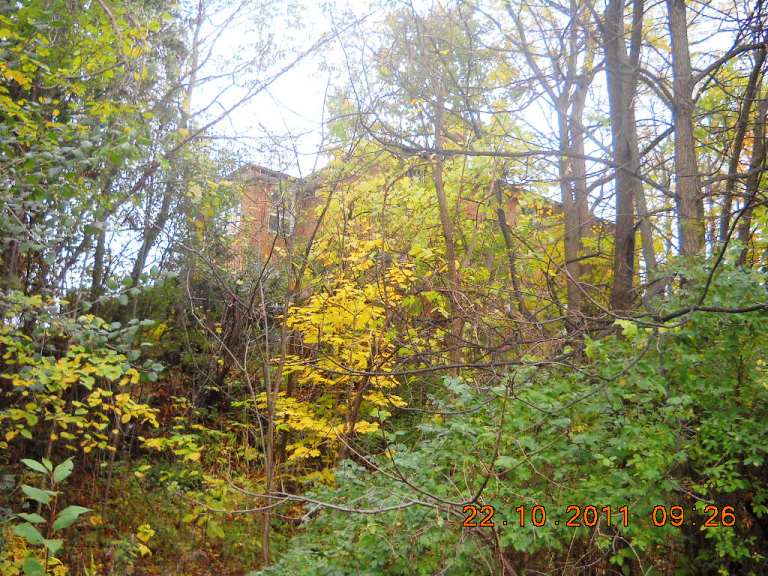
"Chuồng
Gấu", nhìn từ Rừng sau nhà
Note: Tiệm
này bán báo Tây là chính, không bằng 1 tiệm khác, chuyên
trị sách Tây, thứ thật dữ cũng có. Nhưng “hạ cờ Tây” mất rồi:
Librairie
Champlain: A French Bookstore - CLOSED
City's lone
French bookstore to close

Ui chao Gấu
có không biết là bao nhiêu kỷ niệm với tiệm này. Cuốn Lý Thuyết Tiểu Thuyết, mua ở
đây, khi nó vừa được tái bản. Mua gửi NN, giữ cuốn cũ lại, của 1 ông
bạn, quen
qua NTV, ở Montreal tặng. Ông này mua cuốn này cùng thời với Gấu, mua ở
Sài
Gòn, những ngày mới làm quen với Lukacs. Cả một bộ Ðệ Nhất Kỳ Thư, Dits et Écrits mấy ngàn trang của
Foucault, gồm 4 tập. Cuốn Bịnh Nhân Anh,
bản tiếng Tây, mua chỉ vì cái bài giới thiệu bản tiếng Pháp.
Ðó là thời
gian đọc sách. Khi có internet, kể như không còn ghé tiệm nữa. Tiệm
đóng cửa
cũng chẳng hay.
Ðệ Nhất Kỳ Thư là nick của NTV gọi bộ sách của
Foucault.
Trong tiệm cũng có 1 khu trưng bày sách cũ. Gấu vớ được 1 cuốn về
Kafka, gồm gần
như toàn thể những phê bình gia hách xì xằng nhất thế giới, viết về
ông. Có những
quầy thật dặc biệt, dành cho từng nhà xb, từng tủ sách, Gallimard,
Point, Policier... Tất nhiên làm sao thiếu khu dành cho
sách mới ra lò, sách được giải thưởng...
Cái tiệm sách báo Tẩy cũng dẹp rồi. Mấy tờ báo
văn học Tẩy, mấy tháng nay cũng không về.
http://nhilinhblog.blogspot.ca/2015/09/con-duong-nguyen-du.html
Kiều vs Văn Tế
Dùng hình ảnh, để minh họa, thì Kiều là số phận của 1 người đàn bà, thí dụ em Phượng, trong Người Mỹ Trầm Lặng,
mà như tay ký giả Hồng Mao, Fowler, ghiền, khuyên Pyle,
hãy mang em về Mẽo, quên cha cái gọi là lực lượng
thứ ba, và luôn cả cái xứ Mít này đi.
Và đúng như thế, như 1 con phượng hoàng tái sinh
từ tro than, em Phượng này cứ thế nở rộ, và trở thành
1 hiện tượng, lấy chồng ngoại nhân, và theo chồng mà
đi, vừa thoát kiếp Mít, vừa trả ơn sinh thành.
Còn Văn Tế, là dành cho, thí dụ, những cái mả tập thể của Huế Mậu Thân.
Khác nhau.
Bài viết này, theo như Gấu được biết, đang được giới tinh anh
trong nước ca rầm trời, nhưng theo Gấu, hỏng, vì tham quá.
Gấu bị mấy vì thân hữu TV chê, ôm đồm
quá, là cũng theo ý này, nhưng tất cả những bài
viết của Gấu, trên TV, là xoáy về chỉ có 1 câu
hỏi, ”tại sao Lò Thiêu”.
Bài này, của NL, đúng ra phải viết về cùng 1
ý hướng, tâm trạng như thế, tức là, tìm ra cái
giống, và không giống, giữa Kiều và Văn Tế.
Bỏ hết mấy thứ rác rưởi, những đấng cù lần như Kim Trọng, thí dụ.
Luôn cả Văn Cao. Để khi khác. trong 1 bài viết khác.
Gấu cũng đã từng sử dụng ý hướng này, khi đặt câu
hỏi tại sao, Đỗ Long Vân viết, “Vô Kỵ giữa chúng ta”,
cũng như tại sao, Nhượng Tống dịch “Mái Tây”:
Vào lúc viết/dịch như thế, họ ngửi ra… cái chết?
Với Nhượng Tống, ông ngửi ra VC sắp làm thịt ông, còn
với DLV, ông ngửi ra Bắc Kít sắp vô… Saigon?
Bất cứ 1 tác phẩm lớn, đều có 1 cái đinh - tức thời
điểm lịch sử - để treo tác phẩm, mô phỏng A. Dumas, khi bị chê
hiếp dâm lịch sử, đẻ ra toàn hoang thai. “Bếp Lửa” 1954; “Một
Chủ Nhật Khác”, là cùng thời điểm DLV viết “Vô
Kỵ giữa chúng ta”.
Kim Dung, khi viết chưởng, thì đều mở ra bằng 1 chi tiết/sự kiện lịch sử, là cũng ý đó.
Ông cần 1 cái đinh, để treo tác phẩm của mình.
Re Văn Cao. Văn Cao theo Gấu có gì giống Joseph Roth, nhờ giết
người mà được vô nước Chúa, và trở thành
Thánh:
Với những
độc giả Việt Nam thường quan tâm tới
văn học Việt Nam, và số phận hẩm hiu của những nhà văn An Nam khổ như
chó, nhất
là của những người thuộc nhóm Nhân Văn Giai Phẩm, đặc biệt là Văn Cao:
họ đều
mang bóng dáng những nhân vật của Roth, đều cưu mang những đề tài của
Roth.
Chúng ta cứ tự hỏi, tại sao ông [Roth] không thể đi Mẽo: hãy giả dụ một
ông Văn
Cao di cư vào Nam, và sau đó vượt biên rồi nhập tịch Mẽo, là thấy ngay
sự tiếu
lâm của nó!
Đề tài cuốn Vị Khách Mời Của Trái Đất [Tarbaras,
The Guest on
Earth], của Roth, thật hợp với Văn Cao, nhưng với rất nhiều khác
biệt. Đây là
câu chuyện, một ông giết người sau đó trở thành thánh, và vì ông giết
người,
sau thú tội, và là người độc nhất thú tội, nên mới trở thành thánh!
Kafka Could
Be Part of Human Memory
"Phần hồi ức con người" của Kafka, thì cũng giống như 1954 của TTT, với
hồi ức Mít: Chúng ta không thể nào hiểu được 1954 nếu thiếu "Bếp Lửa",
thí dụ vậy,
Ferrari hỏi
Borges, nghe người ta nói là, chúng ta không thể hiểu được lịch sử của
thời
chúng ta, nếu thiếu sự giúp đỡ của Kafka, Borges bèn trả lời, thì đúng
như thế,
nhưng quá thế nữa, Kafka quan trọng hơn lịch sử của chúng ta!
Ui chao em của
GCC, HA, trách Gấu, mi viết hoài về TTT, ở trên net, rồi mi chết,
thì mất liêu luôn, sao không chịu in ra giấy, vì TTT còn quan trọng hơn
cả hồi ức
Mít!
Hà, hà!
FERRARI. But
we are told that we cannot make a faithful interpretation of our times
without Kafka's help.
BORGES. Yes,
but Kafka is more important than our times....
Book of Fantasy
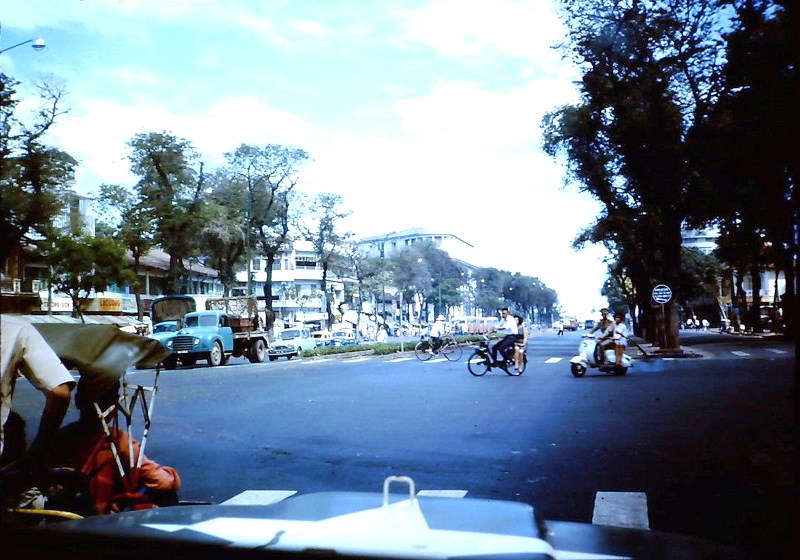
Hàm Nghi, Chợ Cũ, 1965
Hình manhhai
Thiên đường ngày nào của GCC
Hồi còn nhỏ, có lần, Gấu suýt chết đuối.
Thấy người ta nhảy xuống sông, bơi ào ào, thì
bèn cũng nhảy xuống sông, và… cứ thế chìm
xuống đáy.
Một đấng đàn anh đứng kế bên, bèn vội nhảy xuống, lôi lên.
Lạ, là về già, nghĩ lại cú suýt chết, thì
lại hiểu ra, cái anh lớn tuổi, không phải vô tư đứng kế
bên!
Anh ta có cái nhiệm vụ, theo cái kiểu… thiên sứ của Sến!
Khủng khiếp nhất, là cái cú chết hụt, ngày còn
nhỏ, lại lập lại, lần ở PLT, Tiểu Sài Gòn.
Giả như không có vợ chồng ông bạn Bạn, thì chắc chắn ngỏm.
Bà vợ, ngồi trong xe, chỉ ông chồng, anh coi kìa, ông
bạn của anh hình như đang tính lên chuyến tàu
suốt, kìa!
Ông chồng phóng vội xe tới.
Kịp!
Sau này, nghĩ lại, Gấu hiểu ra là, vào mỗi cuộc đời
của Gấu, đều có 1 vì tiên nữ/thiên sứ/.... tới,
an ủi Gấu Cà Chớn!
Không có Cô Bạn, là không làm sao qua nổi cuộc chiến.
Không có nữ thi sĩ, là không làm sao qua được… dư âm cơn địa chấn đó.
Ta bận chồng, bận con, làm sao mà lo được gì cho mi?
Mi làm phiền ta quá, kiếp trước mi đúng là con đỉa!
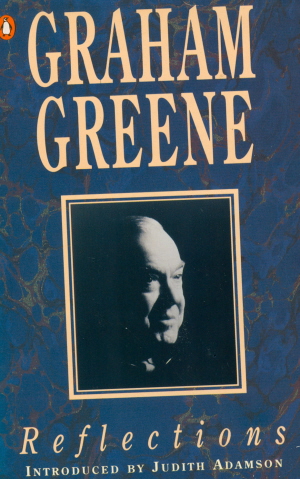
Reflections
là những bài viết ngắn, về đủ thứ, những chuyến đi, những bài điểm
sách, điểm phim, giới thiệu sách. Trong có hai bài thật thú. Một, về
những tiệm bán sách cũ, và một, tưởng niệm Borges, cũng là kỷ niệm lần
Greene gặp Borges. TV sẽ chuyển ngữ cả hai.
Bài về
những tiệm sách cũ làm Gấu nhớ tới những tiệm sách cũ ở khu Chợ Đũi,
cũng một thiên đường tuổi mới lớn của Gấu cùng với Sài Gòn. Thời gian
quen HPA. Gấu đã kể về chúng trong một bài viết cũ. Đọc bài viết của
Greene còn làm Gấu nhớ tới cái tiệm sách cũ nằm giữa một con hẻm giữa
hai bức tường, của hai căn nhà trên con phố Catinat, cũng gần Quán
Chùa. Gấu thường ghé đó, cùng với ông Hưng, AP man. Cũng một trong
những đền thiêng của VNCH, và cũng bị VC ủi sập, cùng với Givral,
Passage Eden, Quán Chùa.
Tôi
không biết Freud giải thích thế nào về chúng, nhưng trong hơn ba chục
năm, những giấc mơ hạnh phúc nhất của tôi, là về những tiệm bán sách
cũ: những tiệm trước đó tôi chẳng hề biết, hoàn toàn vô danh đối với
tôi, hay những tiệm quen thuộc, cũ xưa mà tôi đang ghé.
Đó là những tiệm sách quen chẳng hề hiện hữu; tôi thật ngại ngần và
đành phải đi đến kết luận như vậy.
Đâu đó, không xa Gare du Nord ở Paris tôi vẫn còn nguyên những kỷ niệm
tươi rói về một tiệm sách ở cuối một con phố dài chạy mãi lên một đỉnh
đồi, một tiệm sách sâu hun hút, với những quầy, giá sách cao thật cao,
và cao như tôi mà cũng phải dùng tới một cái thang, để lục lọi những
giá sách gần đụng trần nhà. Trong ít ra là hai lần, tôi đã lục lọi như
vậy, và tôi tin rằng, đã vớ được bản dịch một cuốn của Apollinaire, nhà
xb Fanny Hill, trong một lần
đó.
Nhưng khi chiến tranh chấm dứt tôi cố tìm tiệm sách cũ trên, vô ích, vô
phương.
Lẽ dĩ nhiên, tiệm có thể biến mất, nhưng con phố, chính nó, cũng đếch
còn. Thế mới quái!
Rồi còn một tiệm sách cũ của London,
nó cứ trăn trở, đi đi lại lại hoài, trong những giấc mộng của tôi; tôi
có thể nhớ ra thật là rõ ràng mặt tiền của nó, nhưng chịu thua, phía
bên trong tiệm. Nó đứng đâu đó trong khu đằng sau Charlotte Street trước khi bạn
tới Euston Road.
Tôi chưa từng đi vô bên trong tiệm, và bây
giờ thì tôi tin chắc là làm đếch gì có
cái tiệm quỉ quái đó, và tôi luôn
luôn tỉnh giấc mơ với cảm giác, ôi chao, sướng ơi là
sướng nếu mình kiếm thấy nó.
Graham Greene
*
Ui
chao, không lẽ Sài Gòn, Khu Chợ Đũi, BHD, Quán Chùa..... của Gấu, thì
cũng chỉ như một trong những tiệm sách cũ, như trên, của Greene?
Nhưng,
giả như thế, thì lại càng tuyệt, tuyệt!
Bởi vì
rõ ràng là, khi dịch "Istanbul", Gấu cũng có cảm giác như vậy,
không phải về những con phố của Istanbul của Pamuk, nhưng mà là của
Sài Gòn. Những đoạn phóng bút, là về Sài Gòn, về BHD của Gấu, không
phải về Istanbul, về BHD của Pamuk!
[Bản
thảo dịch
"Istanbul", dài hơn nhiều, so với bản được in. Và có những đoạn tuyệt
vời về Sài Gòn, BHD. Bữa nào rảnh GCC soạn lại, và post lên TV, để bạn
đọc so
sánh với bản in, và thêm nhớ… cùng với GCC!]
Một
vị thân hữu nhận ra điều này, khi viết:
Những mối tình e ấp , sót lại
những sợi tơ vương vướng đâu đó trong tâm hồn phần đông trong chúng ta,
không giống như vết dao vẫn còn tươm máu mãi trong “Lan Hương” của tác
giả Nguyễn Quốc Trụ . Anh có thể lồng bóng mình và người yêu một thời
(và một đời) của mình gần như vào bất cứ một mối tình văn chương nào mà
anh đọc đến, chỉ cần mối tình ấy là một mối tình lý tưởng, trong trắng
và mù quáng đến rũ rượi . Đọc truyện tình của anh, K có cảm tưởng như
nếu giả thử cần bắt đầu lại, thì anh cũng sẽ lao vào cuộc tình như thế,
không ngần ngại chút nào, chỉ lại để được đau đớn một cách hạnh phúc.
Ui chao Gấu Cái đọc đoạn trên,
lắc đầu!
… nếu giả thử cần bắt đầu lại, thì anh cũng
sẽ lao vào cuộc
tình như thế, không ngần ngại chút nào, chỉ lại để được đau đớn một
cách hạnh
phúc.
Đúng là tình
trạng GCC, và mối tình, thê lương tiều tụy, thuần tưởng tượng, với xứ… Bắc Kít, qua 1 em Bắc Kít, chưa từng gặp mặt!
(1)
Ta đâu còn
chút thì giờ nào dành cho mi? Ta bận chồng, bận con, bận đủ thứ, bận
“viết” nữa….
Hà, hà!
.... và tôi
luôn luôn tỉnh giấc mơ với cảm giác, ôi chao, sướng ơi là sướng nếu
mình kiếm
thấy "em"!
(1)
Tuy nhiên, đọc
kỹ, thấy mùi vị hiện sinh, Camus, trong Người đàn bà ngoại tình. Truyện
ngắn
này, hay đúng hơn, toàn cõi văn của Camus là đều chỉ để nói về Lưu đầy
và Quê
nhà: Quê nhà là cõi đã mất kia.
Coetzee đọc The
Pickkup của Gordimer, coi như được mặc
khải từ Người đàn bà ngoại tình của
Camus: Câu chuyện một người đàn bà Algeria gốc Pháp, steals away from
her
husband in the night in order to expose herself to the desert and
experience
the mystical ecstasy, physical as much as spiritual, that it induces.
[Coetzee:
Nadine Gordimer]
Cái câu tiếng
Hồng Mao, trên đây, của Coetzee, thì thật là quá tuyệt vời, để diễn cái
ý, ta đâu
có thì giờ dành cho mi, ta bận chồng, bận con…
Ui chao, nhảm,
nhảm thực!
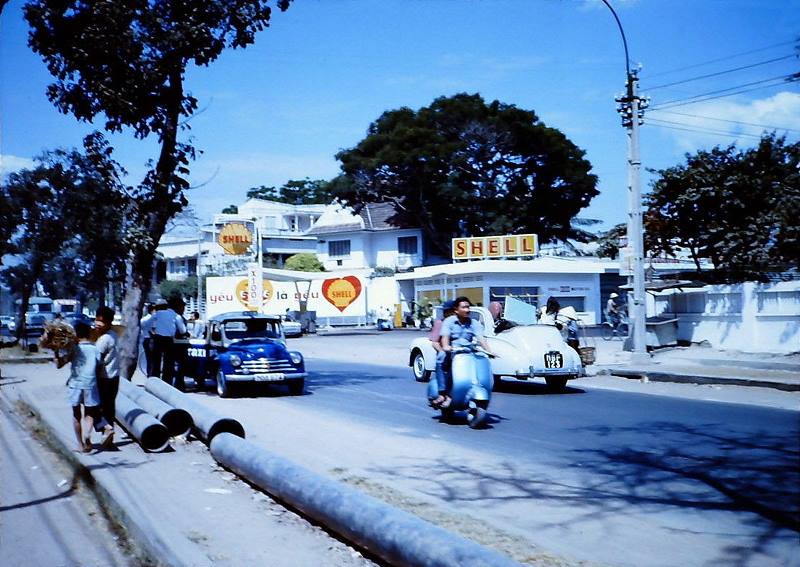
SAIGON 1965 - Street Scene - Ngã
tư giao lộ Cách Mạng 1-11 với Nguyễn Huỳnh Đức, nay là ngã
tư NKKN-Huỳnh Văn Bánh
manhhai
GCC ở khu này, trong 1 con hẻm trên đường NHD, phía sau cây xăng.
Gấu, căn nhà ở hẻm Nguyễn Huỳnh Đức Phú Nhuận, chiếc solex ngày nào, và...
"Làm sao có thể quên được một người đã nói
yêu mình, lần đầu tiên trong đời. Cái lần anh đón
H. trên đường tới trường Gia Long, ngay lối vào vườn Tao Đàn,
buổi sáng sớm sau bao năm trời xa cách, H. đã tự nhiên
ngồi lên xe. Vậy là anh đã hiểu."
Thứ tình yêu đầy những passion mà anh có đó,
em không có, hay thứ tình yêu gồm một phần ba là
confiance, một phần ba là respect, một phần ba là "je ne sais
quoi" , có lẽ, hình như em đã yêu anh như vậy..
Chàng nhớ lời nàng nói, khi phải trả lời tại sao nàng
yêu chàng: "Tại vì anh yêu em nhiều quá."
Tình yêu của nàng giống như một sự đáp ứng, một
sự dội lại tình yêu của chàng. Một lần khác, nàng
trả lời: "Tại vì anh hơn em mười một tuổi." Nàng tỏ vẻ tin
cậy chàng, tin tưởng mối tình của chàng đối với nàng,
tình yêu đồng nghĩa với sự tin cậy, tin tưởng, và kính
trọng. Nàng là một cô gái thông minh, học
giỏi, mới lớn lên, đứng ngập ngừng ở ngưỡng cửa đời sống, tò
mò ngắm nghía đời sống, những người khác, thế giới,
tò mò ngắm nghía xen lẫn chút e dè sợ
sệt, và nàng hy vọng ở chàng, mong có chàng
ở bên cạnh trong đoạn đường đầu tiên khó khăn, nguy hiểm,
và đầy bất trắc đó, như vậy nàng sẽ yên tâm
hơn.
We never grow up - only older, then old-
Chúng
ta chẳng bao giờ trưởng thành, nhưng cứ thêm tuổi mãi
ra, già mãi ra, rồi già.
In one of Nabokov's works - this is another of my lost trouvailles - a character
tells of someone losing something, a ring, I think it was, in a rock pool
somewhere on the Riviera and returning a year later to the day and finding
it again in exactly the spot where it was lost, but that kind of thing only
happens in the Russian enchanter's magical version of our sullenly acquisitive
world.
Trong 1 trong những tác phẩm của Nabokov - thì cũng lại
là 1 trong những mất đi tìm lại được của tớ - một nhân
vật kể về 1 tay nào đó, đánh mất một cái gì
đó - một cái nhẫn. Hình như tại một cái ao, bên
dưới 1 hòn đá, ở một nơi nào đó, ở Riviera, và
một năm sau trở lại, vào ngày đó, và kiếm lại
được cái nhẫn đúng tại nơi đã mất, nhưng cái
thứ này chỉ xẩy ra trong 1 ấn bản thần tiên của một tay phù
thuỷ Nga....
Ui chao, đúng là cái tình cảnh của GCC:
Như người xưa đánh rớt cây gươm xuống lòng sông, bèn ghi dấu nơi mạn thuyền,
chàng trở lại chốn xưa, tìm vết giầy trên lớp bụi thời gian, và tiếng cười
của nàng vẫn còn văng vẳng đâu đây!
Ôi chao, giờ đọc lại vưỡn còn bùi ngùi!
Nhưng tại làm sao mà em ngộ ra rằng thì là, GCC chẳng bao giờ trưởng thành,
cứ yêu mãi 1 đứa con nít... là nàng, từ đời thuở nào?
Hà, hà!
|
|
From the cradle to the coffin, underwear comes first.
-Bertoft Brecht, 1928
Từ cái nôi tới hòm, nội y tới trước.
Cho anh cái xịp làm kỷ niệm, nhe!
Fashions in sin change
-Lillian Hellman, 1941
Kiểu cọ trong tội lỗi thay đổi
Quả thế.
Xưa, thì, "chàng nắm vạt áo, quỳ xuống năn nỉ, nàng
bèn xiêu lòng" ["Tiền kiếp của Gấu Cà Chớn", Liêu
Trai], bi giờ thì:
-Nằm yên! ["Nhà có cửa khóa trái"]
-Em biết tay anh chưa? [chửi tục]. TTT
Style is the image of character.
-Edward Gibbon, c.1789
... vội vàng chạy vô cổng trường rồi lại vội
vàng chạy
ra: nàng quên không dặn chàng trưa nay đừng đón nàng, vì nàng sẽ về
chung với bạn...
Nguyễn Tân Văn, mê nhất cái cảnh này.....
It's not
that I'm afraid to die, I just don't want to be there when it happens
Woody Allen
Tớ đếch sợ
chết. Nhưng tớ đếch thích có mặt ở đó, khi nó xẩy ra.
I don’t
believe in an afterlife, although I am bringing a change of underwear.
Tớ đếch tin
vào đời sau. Tuy nhiên, tớ có mang theo xịp. Luôn cả nịt vú nữa, cho em
của tớ!
Woody Allen, 1971
Tiền
kiếp
của Gấu
Cô
Sáu cười khẽ nói "Người khinh bạc như y
làm sao gần gũi được?". Cô gái cầm
hai chén rượu của hai người đổi cho nhau ép phải uống rồi nói, "Môi đã
chạm nhau rồi, còn giả vờ làm gì?". Giây lát cô Bảy cũng bỏ đi, trong
phòng chỉ còn hai người.
Từ bèn đứng lên định
ép buộc,
cô Sáu dịu dàng chống cự. Từ níu vạt áo nàng quỳ xuống nài nỉ, nàng dần
dần
xiêu lòng,...
The only explanation for the creation of the world is God's fear of solitude.
In other words, our role is to amuse Our Maker. Poor clowns of the absolute,
we forget that we act out a tragedy to enliven the boredom of one spectator
whose applause has never reached a mortal ear. Solitude weighs on God so
much that he invented the saints as partners in dialogue. The greatest piece
of good luck Jesus had was that he died young. Had he lived to be sixty,
he would have given us his memoirs instead of the cross. Even today, we would
still be blowing the dust off God's unlucky son. The beating of our heart
threw us out of paradise; when we understood its meaning we fell into Time.
All the sages put together are not worth a single one of Lear's curses or
Ivan Karamazov's ravings.
Cioran
Lời
giải thích độc nhất, về cái chuyện Chúa sáng
tạo ra thế giới, là do Người sợ cô đơn quá!
Nói 1 cách khác, vai trò của chúng ta,
là, làm Người vui. Những tên hề đáng thương của
sự tuyệt đối, chúng ta quên mẹ đi mất, rằng thì là,
trong khi mua vui cho Vì Chúa Tể Sáng Tạo, cùng
lúc, chúng ta làm bật ra một bi kịch làm sôi
nổi nỗi buồn chán của một khán giả độc nhất mà tiếng
vỗ tay chẳng bao giờ thèm tới, với lỗ tai trần tục của chúng
ta!
Nỗi cô đơn của Chúa nặng đến nỗi, Người bèn phịa ra,
nào thánh, nào thần, nào tiên nữ…, như
là những “partners” để cùng lèm bèm!
Cái may mắn thần sầu lớn lao nhất mà Chúa Ky Tô
có được, là Người chết trẻ. Giả như thọ sáu bó,
thì thay vì thập tự, hẳn là Người sẽ để lại cho chúng
ta những tập hồi ký, hay phỏng vấn phỏng viếc, như nhà thơ
dởm hải ngoại đã từng thực hiện với đao phủ Mậu Thân!
Ngay cả đến những ngày này, tín hữu Ky Tô vẫn
còn bận bịu phủi bụi cho đứa con bất hạnh của Chúa Cả!
Tiếng đập của tim làm chúng ta văng ra khỏi thiên đàng,
khi chúng ta hiểu ra được ý nghĩa của cú đá đít
này, chúng ta té vô Thời Gian.
Tất cả những vì hiền giả cộng lại, không bằng một cú
nguyền rủa của vua Lear, hay những gầm rú của Ivan Karamazov
Charles Simic trích dẫn, trong "Triết Gia của sự mất ngủ"
My Secret
Charles Simic
“Thơ thì làm ở trên
giường,
như Êu”
“Poetry is made in bed like love”
“For a lazy
man I’m extremely industrious.”
—William
Dean Howells
Như 1 tên
đại lãn, tôi cực kỳ siêng năng.
TEACHING THE
APE TO WRITE POEMS
They didn’t
have much trouble
teaching the
ape to write poems:
first they
strapped him into the chair,
then tied
the pencil around his hand
(the paper
had already been nailed down).
Then Dr.
Bluespire leaned over his shoulder
and
whispered into his ear:
“You look
like a god sitting there.
Why don’t
you try writing something?”
Dạy Khỉ Mần
Thơ
Cũng chẳng
hơi bị khó
Trước tiên
trói chú vô cái ghế nhà thơ vưỡn thường ngồi
Rồi buộc cây
viết chì vô tay chú
(tờ giấy thì
cũng đã đóng đinh lên... thập tự rùi) (1)
Và ông đốc
tưa, kiêm nhà văn, kiêm nhà thơ Mít bèn ghé tai chú, thì thầm:
Y chang Chúa
đang ngồi
Sao không thử
viết 1 cái chó gì như là… thơ?
(1) Cái này
Mít gọi là "đóng đinh thập tự thơ"!
Hoặc
"thơ viết dưới giá treo cổ"!
Đọc bài
thơ
thì GCC hiểu ra tại làm sao mấy ông tu bíp, đốc tưa Mít,
ưa làm nhà văn nhà thơ hơn là hành nghề cứu người.
NXH's Poems of the
Night
The Disquieting Resonance of 'The Quiet
American'
by Pico Iyer
April 21, 2008 5:08 PM ET
Mít vs Lò Thiêu Người
The Gulag can be regarded as the quintessential expression of modern Russian
society. This vast array of punishment zones across Russia, started in Tsarist
times and ending in the Soviet era, left a legacy on the Russian quest for
identity. In Russia, prison is usually referred to as the malinkaya zone
(small zone). The Russians have an expression for freedom: bolshaya zona,
(big zone). The distinction being that one is slightly less humane than the
other. But which one? A Russian friend once said, "First they make you work
in the factory, then they finish you off in prison." By the 1950s, the Gulag
played an integral role in the development of the Soviet economy. In fact,
Stalin used these camps as a source of economic stimulation, to excavate
the vast natural resources of the east and to stimulate growth and settlement
across the twelve time zones of the former USSR. The majority of mines, timber
industries, factories, and Russia's prized oil and gas fields were all discovered
through convict labour. In effect, almost every imaginable industry in Russia
today exists because of Stalin's policy. This photo was taken at the state
theatre in Vorkuta, a large city in the far north of Russia, beyond the Arctic
Circle, and one of the largest penal colonies created by the Soviet bureaucracy.
Today, survivors-both prisoner and guard-and their descendants still live
in this city. The woman was the lead in a play by Ostrovsky: Crazy Money.
www.donaldweber.com
Spring 2015
THE NEW QUARTERLY
Nếu không có cú dậy cho VC một bài học,
lũ Ngụy "vẫn sống ở Trại Tù", cùng với con cái của chúng.
Tờ Điểm Sách Nữu Ước, NYRB, có bài của Timothy Snyder,
về “Thế giới của Hitler”.
Tờ Người Nữu Ước, Adam Gopnik có bài
“Những ám ảnh của Hitler”.
Tin Văn post cả hai, và thủng thẳng
đi vài đường về nó. Một câu chuyện mới về Lò
Thiêu, như Adam Gopnik, tác giả bài viết trên tờ
Người Nữu Ước, phán.
Book of Fantasy
Levi Page
Hurbinek
là 1 đứa trẻ “không đứa trẻ”, một đứa bé của cái
chết, một đứa trẻ của Lò Thiêu. Trông nó chừng
ba tuổi, chẳng ai biết 1 tí gì về nó, nó không
thể nói, và không có tên; cái tên
kỳ cục là do chúng tôi gán cho nó, có
lẽ, của một người đàn bà, người này đã cắt nghĩa
cái tên, bằng những âm thanh "chẳng ra làm sao"
mà đứa bé, lúc này lúc khác, thốt
ra.
Đứa bé bị liệt nửa người, từ thắt lưng xuống phía
dưới, chân teo lại, khẳng khiu giống như hai cái que; nhưng
hai con mắt của đứa bé, thất lạc ở trong khuôn mặt hoang phế,
tam giác, thì lại cực kỳ sống động, sống động một cách
khủng khiếp, đầy ắp đòi hỏi, xác nhận, ý chí,
ham muốn đập bể, phá vỡ tấm mồ là cái ù lỳ, đần
độn của nó. Cái tiếng nói mà nó thiếu
chẳng ai bỏ công dậy, cái yêu cầu, “nói”, đó,
khiến cho cái nhìn của nó trở nên cấp bách,
hung hãn, như 1 khối thuốc nổ: đây là cái nhìn
thú vật, nhân bản, ngay cả, có thể nói, trưởng
thành, một phán quyết mà không ai trong chúng
ta có thể hỗ trợ, cực kỳ nặng nề với sức mạnh và niềm khắc
khoải….

Hàm Nghi, Chợ Cũ, 1965
Hình manhhai
Thiên đường ngày nào của GCC
Hồi còn nhỏ, có lần, Gấu suýt chết đuối.
Thấy người ta nhảy xuống sông, bơi ào ào, thì
bèn cũng nhảy xuống sông, và… cứ thế chìm
xuống đáy.
Một đấng đàn anh đứng kế bên, bèn vội nhảy xuống, lôi lên.
Lạ, là về già, nghĩ lại cú suýt chết, thì
lại hiểu ra, cái anh lớn tuổi, không phải vô tư đứng kế
bên!
Anh ta có cái nhiệm vụ, theo cái kiểu… thiên sứ của Sến!
Khủng khiếp nhất, là cái cú chết hụt, ngày còn
nhỏ, lại lập lại, lần ở PLT, Tiểu Sài Gòn.
Giả như không có vợ chồng ông bạn Bạn, thì chắc chắn ngỏm.
Bà vợ, ngồi trong xe, chỉ ông chồng, anh coi kìa, ông
bạn của anh hình như đang tính lên chuyến tàu
suốt, kìa!
Ông chồng phóng vội xe tới.
Kịp!
Sau này, nghĩ lại, Gấu hiểu ra là, vào mỗi cuộc đời
của Gấu, đều có 1 vì tiên nữ/thiên sứ/.... tới,
an ủi Gấu Cà Chớn!
Không có Cô Bạn, là không làm sao qua nổi cuộc chiến.
Không có nữ thi sĩ, là không làm sao qua được… dư âm cơn địa chấn đó.
Ta bận chồng, bận con, làm sao mà lo được gì cho mi?
Mi làm phiền ta quá, kiếp trước mi đúng là con đỉa!

Reflections
là những bài viết ngắn, về đủ thứ, những chuyến đi, những bài điểm
sách, điểm phim, giới thiệu sách. Trong có hai bài thật thú. Một, về
những tiệm bán sách cũ, và một, tưởng niệm Borges, cũng là kỷ niệm lần
Greene gặp Borges. TV sẽ chuyển ngữ cả hai.
Bài về
những tiệm sách cũ làm Gấu nhớ tới những tiệm sách cũ ở khu Chợ Đũi,
cũng một thiên đường tuổi mới lớn của Gấu cùng với Sài Gòn. Thời gian
quen HPA. Gấu đã kể về chúng trong một bài viết cũ. Đọc bài viết của
Greene còn làm Gấu nhớ tới cái tiệm sách cũ nằm giữa một con hẻm giữa
hai bức tường, của hai căn nhà trên con phố Catinat, cũng gần Quán
Chùa. Gấu thường ghé đó, cùng với ông Hưng, AP man. Cũng một trong
những đền thiêng của VNCH, và cũng bị VC ủi sập, cùng với Givral,
Passage Eden, Quán Chùa.
Tôi
không biết Freud giải thích thế nào về chúng, nhưng trong hơn ba chục
năm, những giấc mơ hạnh phúc nhất của tôi, là về những tiệm bán sách
cũ: những tiệm trước đó tôi chẳng hề biết, hoàn toàn vô danh đối với
tôi, hay những tiệm quen thuộc, cũ xưa mà tôi đang ghé.
Đó là những tiệm sách quen chẳng hề hiện hữu; tôi thật ngại ngần và
đành phải đi đến kết luận như vậy.
Đâu đó, không xa Gare du Nord ở Paris tôi vẫn còn nguyên những kỷ niệm
tươi rói về một tiệm sách ở cuối một con phố dài chạy mãi lên một đỉnh
đồi, một tiệm sách sâu hun hút, với những quầy, giá sách cao thật cao,
và cao như tôi mà cũng phải dùng tới một cái thang, để lục lọi những
giá sách gần đụng trần nhà. Trong ít ra là hai lần, tôi đã lục lọi như
vậy, và tôi tin rằng, đã vớ được bản dịch một cuốn của Apollinaire, nhà
xb Fanny Hill, trong một lần
đó.
Nhưng khi chiến tranh chấm dứt tôi cố tìm tiệm sách cũ trên, vô ích, vô
phương.
Lẽ dĩ nhiên, tiệm có thể biến mất, nhưng con phố, chính nó, cũng đếch
còn. Thế mới quái!
Rồi còn một tiệm sách cũ của London,
nó cứ trăn trở, đi đi lại lại hoài, trong những giấc mộng của tôi; tôi
có thể nhớ ra thật là rõ ràng mặt tiền của nó, nhưng chịu thua, phía
bên trong tiệm. Nó đứng đâu đó trong khu đằng sau Charlotte Street trước khi bạn
tới Euston Road.
Tôi chưa từng đi vô bên trong tiệm, và bây
giờ thì tôi tin chắc là làm đếch gì có
cái tiệm quỉ quái đó, và tôi luôn
luôn tỉnh giấc mơ với cảm giác, ôi chao, sướng ơi là
sướng nếu mình kiếm thấy nó.
Graham Greene
*
Ui
chao, không lẽ Sài Gòn, Khu Chợ Đũi, BHD, Quán Chùa..... của Gấu, thì
cũng chỉ như một trong những tiệm sách cũ, như trên, của Greene?
Nhưng,
giả như thế, thì lại càng tuyệt, tuyệt!
Bởi vì
rõ ràng là, khi dịch "Istanbul", Gấu cũng có cảm giác như vậy,
không phải về những con phố của Istanbul của Pamuk, nhưng mà là của
Sài Gòn. Những đoạn phóng bút, là về Sài Gòn, về BHD của Gấu, không
phải về Istanbul, về BHD của Pamuk!
[Bản
thảo dịch
"Istanbul", dài hơn nhiều, so với bản được in. Và có những đoạn tuyệt
vời về Sài Gòn, BHD. Bữa nào rảnh GCC soạn lại, và post lên TV, để bạn
đọc so
sánh với bản in, và thêm nhớ… cùng với GCC!]
Một
vị thân hữu nhận ra điều này, khi viết:
Những mối tình e ấp , sót lại
những sợi tơ vương vướng đâu đó trong tâm hồn phần đông trong chúng ta,
không giống như vết dao vẫn còn tươm máu mãi trong “Lan Hương” của tác
giả Nguyễn Quốc Trụ . Anh có thể lồng bóng mình và người yêu một thời
(và một đời) của mình gần như vào bất cứ một mối tình văn chương nào mà
anh đọc đến, chỉ cần mối tình ấy là một mối tình lý tưởng, trong trắng
và mù quáng đến rũ rượi . Đọc truyện tình của anh, K có cảm tưởng như
nếu giả thử cần bắt đầu lại, thì anh cũng sẽ lao vào cuộc tình như thế,
không ngần ngại chút nào, chỉ lại để được đau đớn một cách hạnh phúc.
Ui chao Gấu Cái đọc đoạn trên,
lắc đầu!
… nếu giả thử cần bắt đầu lại, thì anh cũng
sẽ lao vào cuộc
tình như thế, không ngần ngại chút nào, chỉ lại để được đau đớn một
cách hạnh
phúc.
Đúng là tình
trạng GCC, và mối tình, thê lương tiều tụy, thuần tưởng tượng, với xứ… Bắc Kít, qua 1 em Bắc Kít, chưa từng gặp mặt!
(1)
Ta đâu còn
chút thì giờ nào dành cho mi? Ta bận chồng, bận con, bận đủ thứ, bận
“viết” nữa….
Hà, hà!
.... và tôi
luôn luôn tỉnh giấc mơ với cảm giác, ôi chao, sướng ơi là sướng nếu
mình kiếm
thấy "em"!
(1)
Tuy nhiên, đọc
kỹ, thấy mùi vị hiện sinh, Camus, trong Người đàn bà ngoại tình. Truyện
ngắn
này, hay đúng hơn, toàn cõi văn của Camus là đều chỉ để nói về Lưu đầy
và Quê
nhà: Quê nhà là cõi đã mất kia.
Coetzee đọc The
Pickkup của Gordimer, coi như được mặc
khải từ Người đàn bà ngoại tình của
Camus: Câu chuyện một người đàn bà Algeria gốc Pháp, steals away from
her
husband in the night in order to expose herself to the desert and
experience
the mystical ecstasy, physical as much as spiritual, that it induces.
[Coetzee:
Nadine Gordimer]
Cái câu tiếng
Hồng Mao, trên đây, của Coetzee, thì thật là quá tuyệt vời, để diễn cái
ý, ta đâu
có thì giờ dành cho mi, ta bận chồng, bận con…
Ui chao, nhảm,
nhảm thực!

SAIGON 1965 - Street Scene - Ngã
tư giao lộ Cách Mạng 1-11 với Nguyễn Huỳnh Đức, nay là ngã
tư NKKN-Huỳnh Văn Bánh
manhhai
GCC ở khu này, trong 1 con hẻm trên đường NHD, phía sau cây xăng.
Gấu, căn nhà ở hẻm Nguyễn Huỳnh Đức Phú Nhuận, chiếc solex ngày nào, và...
"Làm sao có thể quên được một người đã nói
yêu mình, lần đầu tiên trong đời. Cái lần anh đón
H. trên đường tới trường Gia Long, ngay lối vào vườn Tao Đàn,
buổi sáng sớm sau bao năm trời xa cách, H. đã tự nhiên
ngồi lên xe. Vậy là anh đã hiểu."
Thứ tình yêu đầy những passion mà anh có đó,
em không có, hay thứ tình yêu gồm một phần ba là
confiance, một phần ba là respect, một phần ba là "je ne sais
quoi" , có lẽ, hình như em đã yêu anh như vậy..
Chàng nhớ lời nàng nói, khi phải trả lời tại sao nàng
yêu chàng: "Tại vì anh yêu em nhiều quá."
Tình yêu của nàng giống như một sự đáp ứng, một
sự dội lại tình yêu của chàng. Một lần khác, nàng
trả lời: "Tại vì anh hơn em mười một tuổi." Nàng tỏ vẻ tin
cậy chàng, tin tưởng mối tình của chàng đối với nàng,
tình yêu đồng nghĩa với sự tin cậy, tin tưởng, và kính
trọng. Nàng là một cô gái thông minh, học
giỏi, mới lớn lên, đứng ngập ngừng ở ngưỡng cửa đời sống, tò
mò ngắm nghía đời sống, những người khác, thế giới,
tò mò ngắm nghía xen lẫn chút e dè sợ
sệt, và nàng hy vọng ở chàng, mong có chàng
ở bên cạnh trong đoạn đường đầu tiên khó khăn, nguy hiểm,
và đầy bất trắc đó, như vậy nàng sẽ yên tâm
hơn.
We never grow up - only older, then old-
Chúng
ta chẳng bao giờ trưởng thành, nhưng cứ thêm tuổi mãi
ra, già mãi ra, rồi già.
In one of Nabokov's works - this is another of my lost trouvailles - a character
tells of someone losing something, a ring, I think it was, in a rock pool
somewhere on the Riviera and returning a year later to the day and finding
it again in exactly the spot where it was lost, but that kind of thing only
happens in the Russian enchanter's magical version of our sullenly acquisitive
world.
Trong 1 trong những tác phẩm của Nabokov - thì cũng lại
là 1 trong những mất đi tìm lại được của tớ - một nhân
vật kể về 1 tay nào đó, đánh mất một cái gì
đó - một cái nhẫn. Hình như tại một cái ao, bên
dưới 1 hòn đá, ở một nơi nào đó, ở Riviera, và
một năm sau trở lại, vào ngày đó, và kiếm lại
được cái nhẫn đúng tại nơi đã mất, nhưng cái
thứ này chỉ xẩy ra trong 1 ấn bản thần tiên của một tay phù
thuỷ Nga....
Ui chao, đúng là cái tình cảnh của GCC:
Như người xưa đánh rớt cây gươm xuống lòng sông, bèn ghi dấu nơi mạn thuyền,
chàng trở lại chốn xưa, tìm vết giầy trên lớp bụi thời gian, và tiếng cười
của nàng vẫn còn văng vẳng đâu đây!
Ôi chao, giờ đọc lại vưỡn còn bùi ngùi!
Nhưng tại làm sao mà em ngộ ra rằng thì là, GCC chẳng bao giờ trưởng thành,
cứ yêu mãi 1 đứa con nít... là nàng, từ đời thuở nào?
Hà, hà!
|
|



